Story and Photos by ITN European Reporter Herve’ Rebollo
Salut à toi American rider,
My ol’ road mate Thierry got his brand new Porsche Spyder some weeks ago. So, it was time to get back on the tiny French roads of the heartland to test the beast in this early autumn.
 The idea was to discover the marvelous MORVAN park.
The idea was to discover the marvelous MORVAN park.
 The Regional Parc du Morvan is found in central Burgundy south of Avallon and, east of Corbigny and west of Autun, and is a landscape of hills and low mountains, woodland and small scale agriculture, crossed by streams, rivers and waterfalls, and hiding numerous traditional villages. The park was created in 1970 to preserve this natural environment that covers approximately 2,800 square kilometres of rolling Burgundy countryside and falls within four different departments: Cote d’Or, Nievre, Saone-et-Loire and Yonne.
The Regional Parc du Morvan is found in central Burgundy south of Avallon and, east of Corbigny and west of Autun, and is a landscape of hills and low mountains, woodland and small scale agriculture, crossed by streams, rivers and waterfalls, and hiding numerous traditional villages. The park was created in 1970 to preserve this natural environment that covers approximately 2,800 square kilometres of rolling Burgundy countryside and falls within four different departments: Cote d’Or, Nievre, Saone-et-Loire and Yonne.
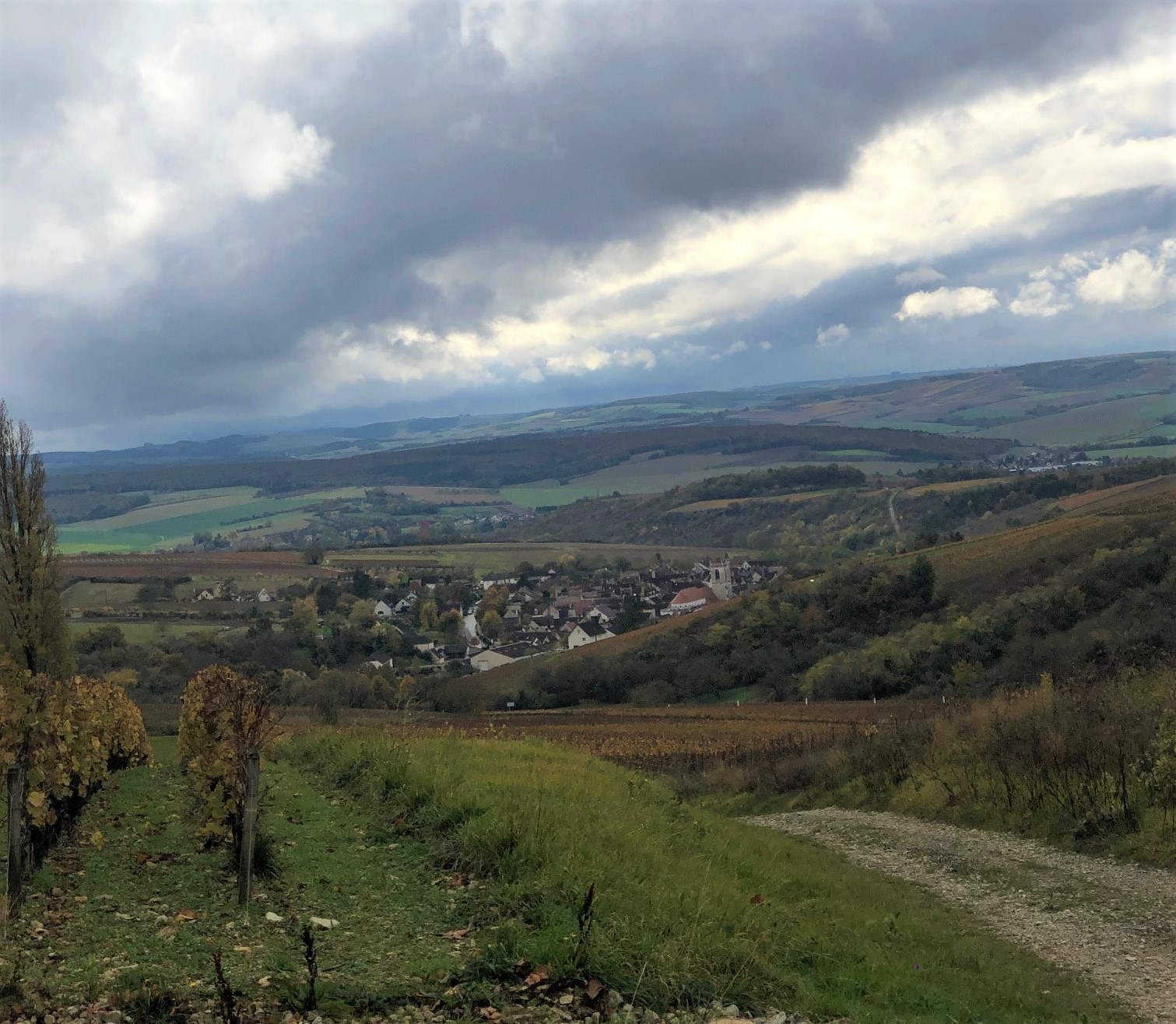 On this early Saturday morning, the weather was not exactly with us. At 7 am it was still night and we were riding /driving in a windy rainy night. But it was ok (mainly because it was not cold), and we arrived at noon at our first stage, a small place in the region of Burgundy (with a population of approximately 2,750 people) named CHABLIS.
On this early Saturday morning, the weather was not exactly with us. At 7 am it was still night and we were riding /driving in a windy rainy night. But it was ok (mainly because it was not cold), and we arrived at noon at our first stage, a small place in the region of Burgundy (with a population of approximately 2,750 people) named CHABLIS.
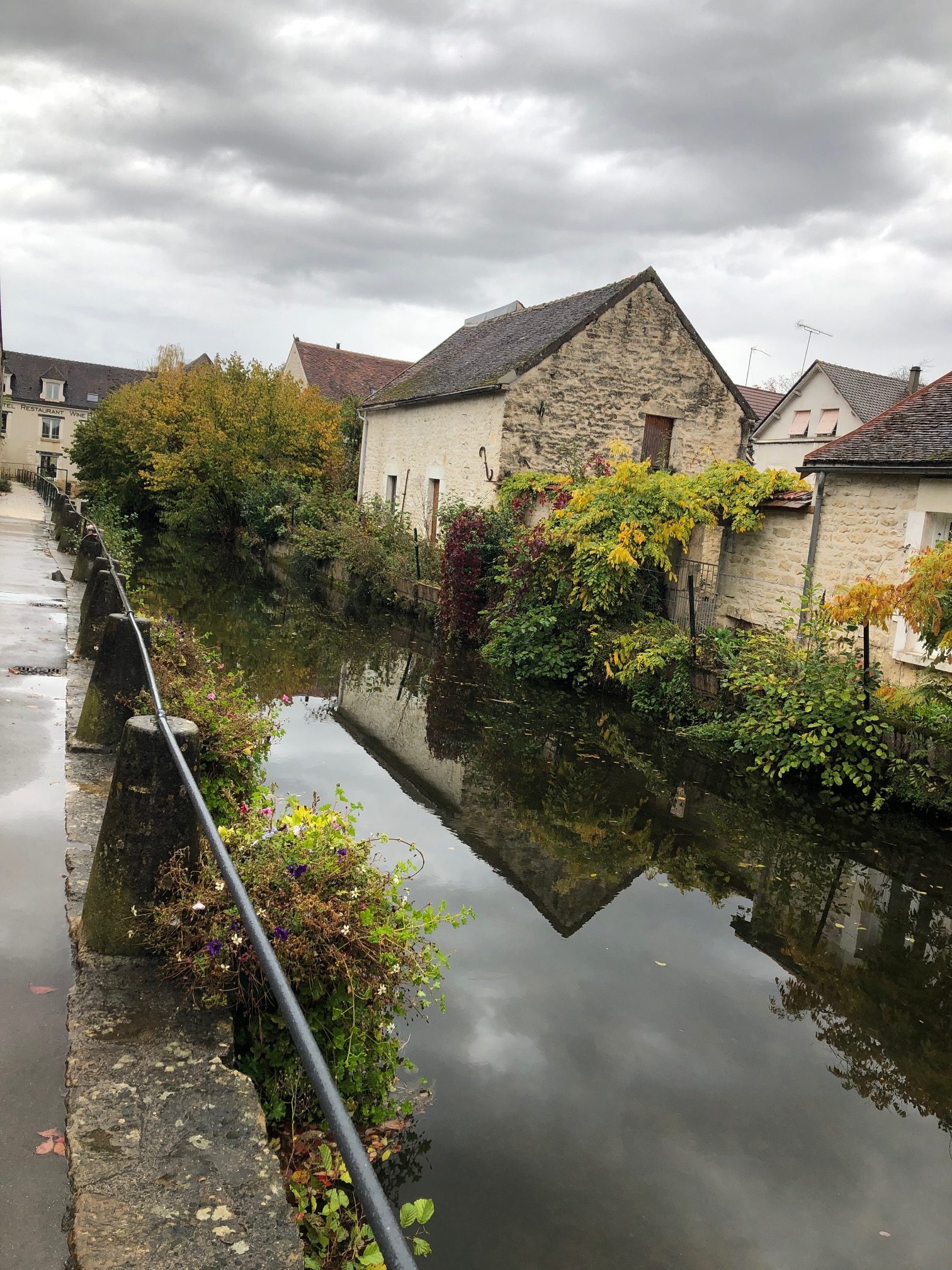 One of the most famous white wines in the world comes from this area in the north west of Burgundy. Monks from the Abbey of Pontigny were the first to plant Chardonnay grapes here on the slopes surrounding the RiverSerein realising that the soil and the microclimate in this area with its cold spring were essential for the dry, honey-scented flavour of the wine. The wines fall into four appellations: Petit Chablis, Chablis, Premier Cru and Grand Cru.
One of the most famous white wines in the world comes from this area in the north west of Burgundy. Monks from the Abbey of Pontigny were the first to plant Chardonnay grapes here on the slopes surrounding the RiverSerein realising that the soil and the microclimate in this area with its cold spring were essential for the dry, honey-scented flavour of the wine. The wines fall into four appellations: Petit Chablis, Chablis, Premier Cru and Grand Cru.
 There is evidence of the town’s lasting prosperity all around. The wine domains, the boutiques and specialist shops, the luxurious hotels and restaurants all herald the visitor.
There is evidence of the town’s lasting prosperity all around. The wine domains, the boutiques and specialist shops, the luxurious hotels and restaurants all herald the visitor.
 A cellar worth visiting is William Fevre, what used to be the old Chablis hospital. His restaurant is next door where you can taste wines by the glass with each regional dish. There is also several bistro-wine bar, for less formal meals.
A cellar worth visiting is William Fevre, what used to be the old Chablis hospital. His restaurant is next door where you can taste wines by the glass with each regional dish. There is also several bistro-wine bar, for less formal meals.
 And of course, I had the perfectly appropriated suit for that kind of place …
And of course, I had the perfectly appropriated suit for that kind of place …
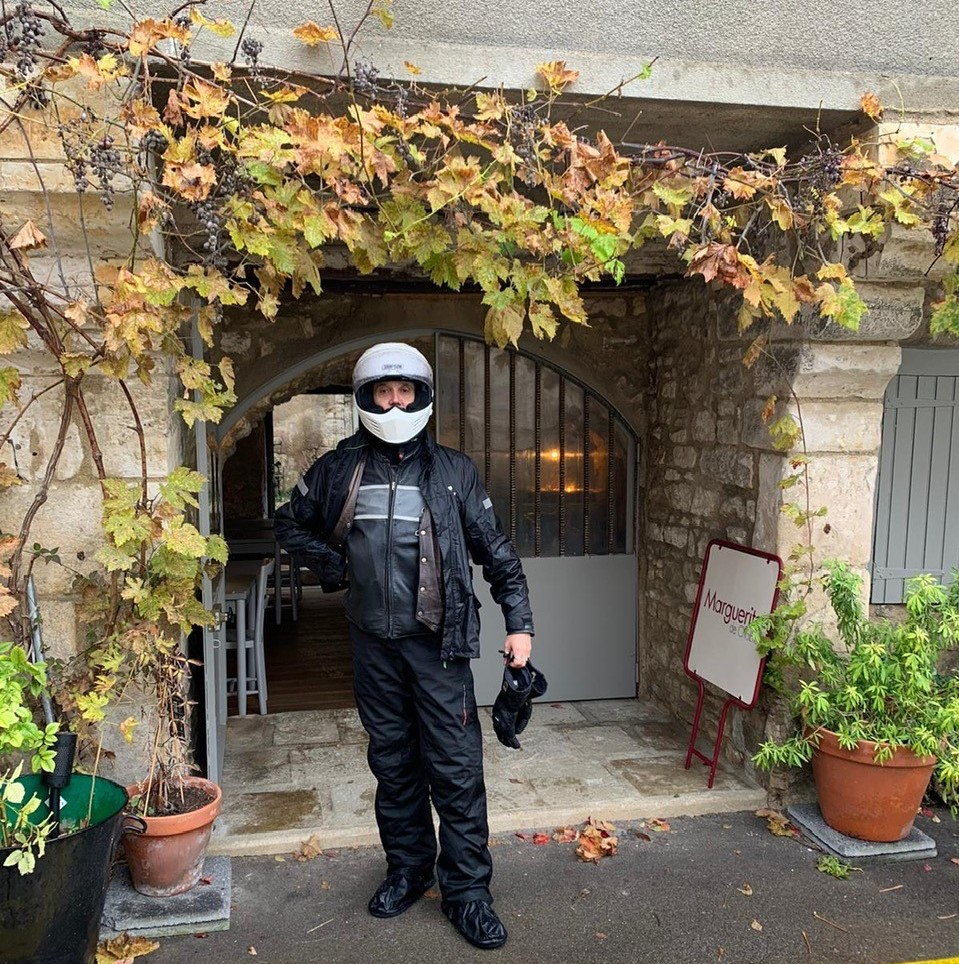 But, as hospitality is not simply a word, but a real art of life in this part of France, it was not difficult to be welcomed in a very nice restaurant of the center village which offered us all the accommodations for a great lunch. And first: heat.
But, as hospitality is not simply a word, but a real art of life in this part of France, it was not difficult to be welcomed in a very nice restaurant of the center village which offered us all the accommodations for a great lunch. And first: heat.
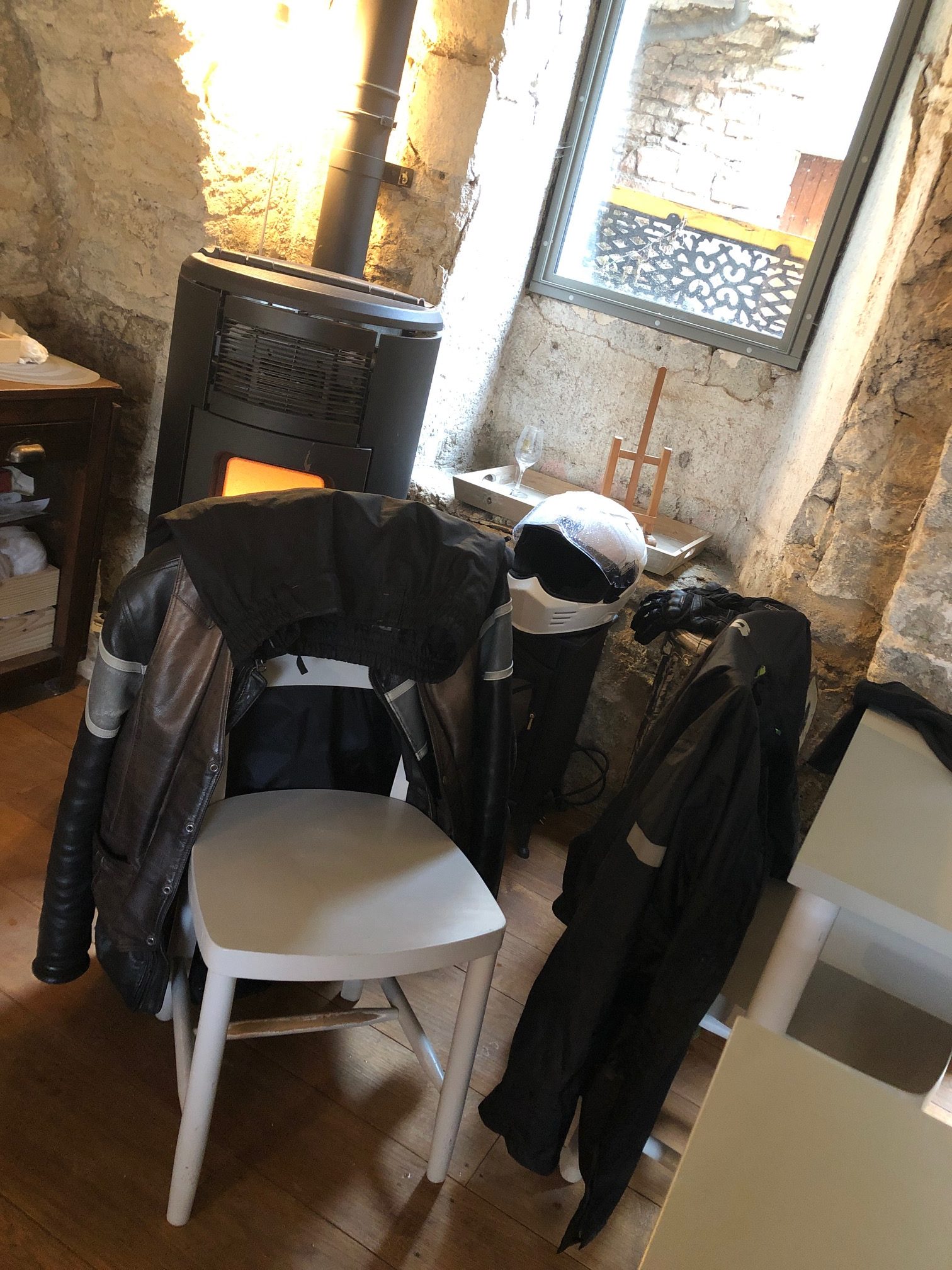 This place was simply amazing.
This place was simply amazing.
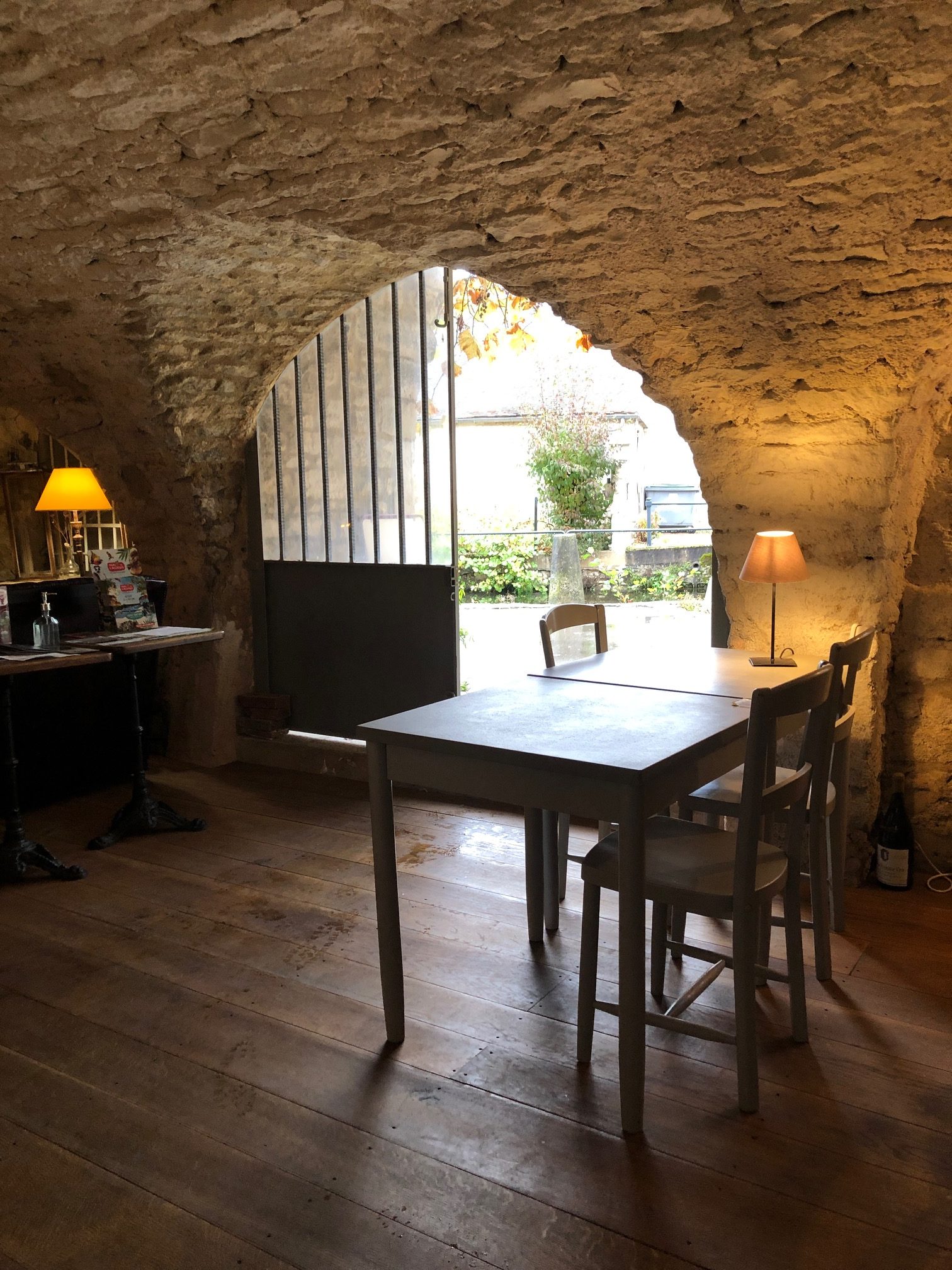 Yes, CHABLIS is really a nice village.
Yes, CHABLIS is really a nice village.
 And when you leave it, you directly enter the legendary vineyards.
And when you leave it, you directly enter the legendary vineyards.
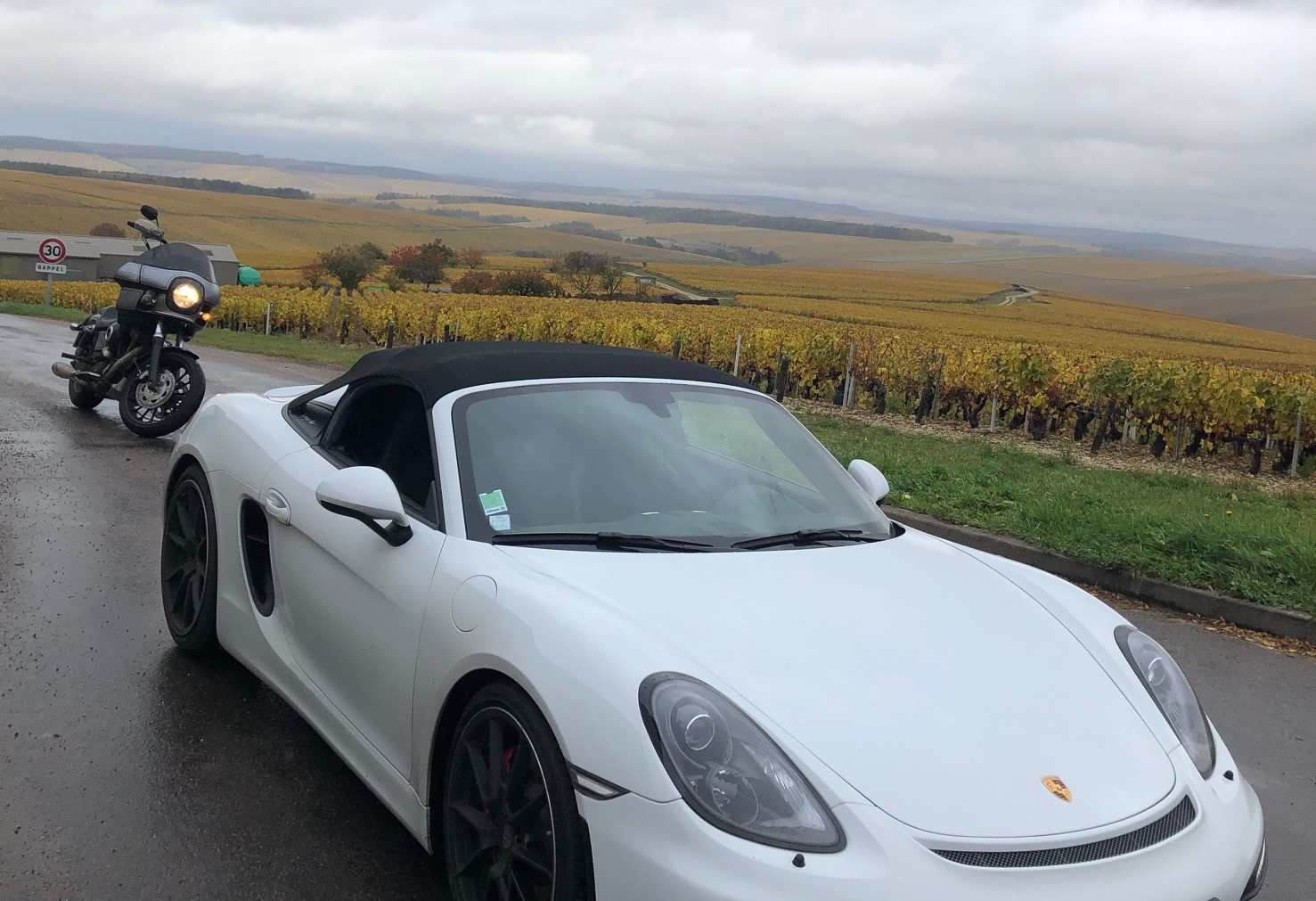 In the autumn light, it is so beautiful.
In the autumn light, it is so beautiful.
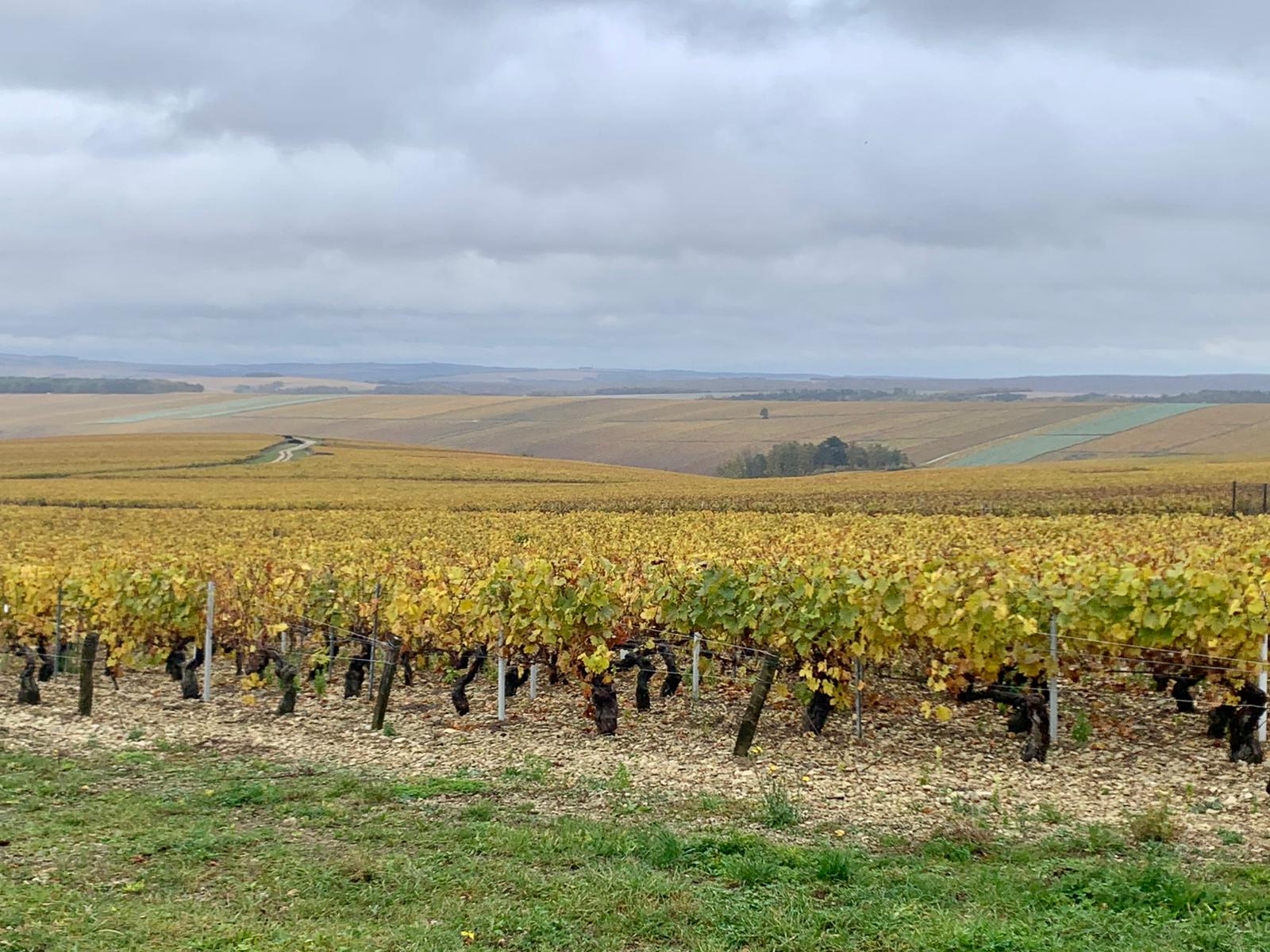 After 2pm, the weather was still cloudy but more and more clear …
After 2pm, the weather was still cloudy but more and more clear …
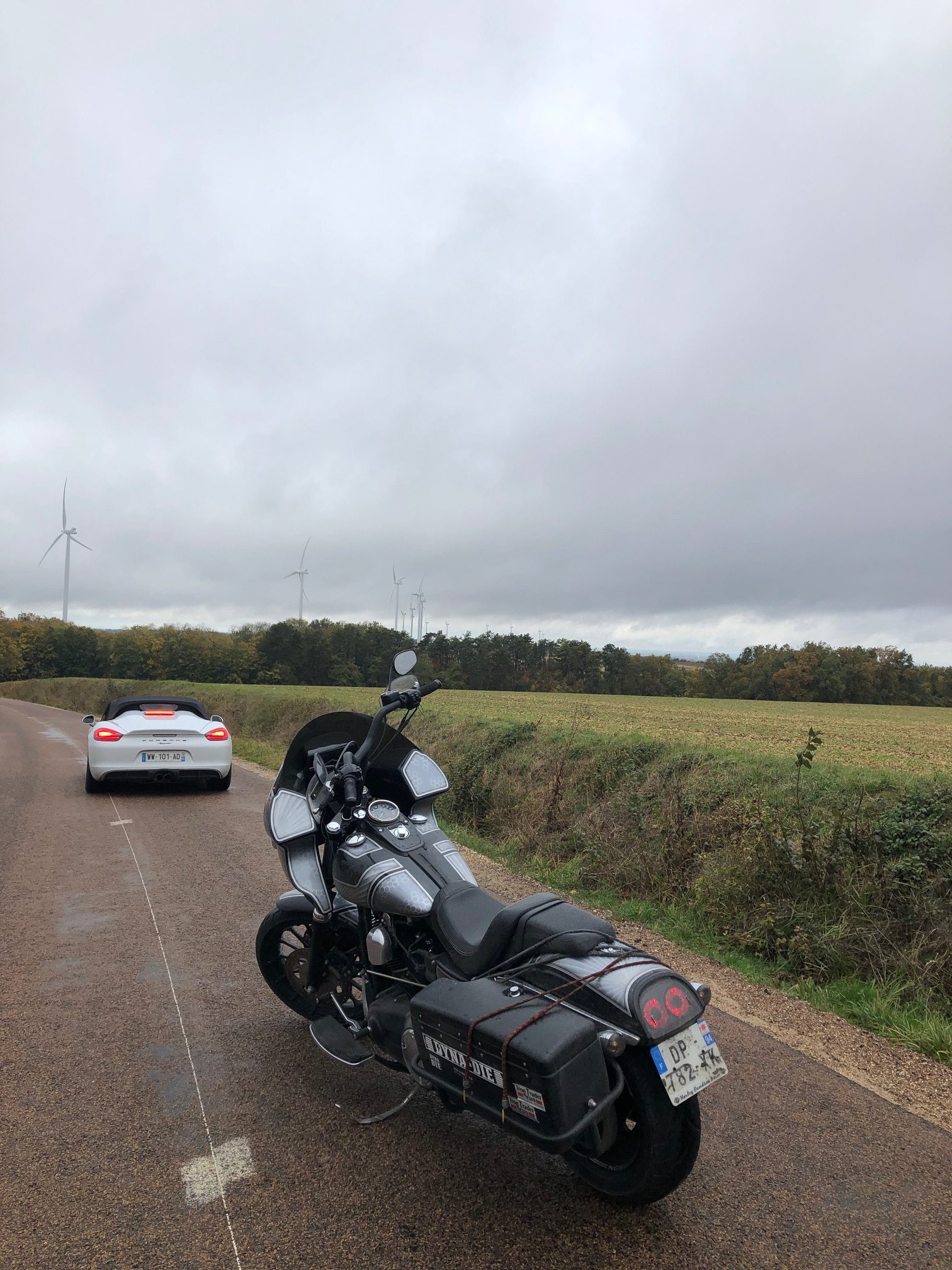 It was time to make a stop in the old city of NOYER.
It was time to make a stop in the old city of NOYER.
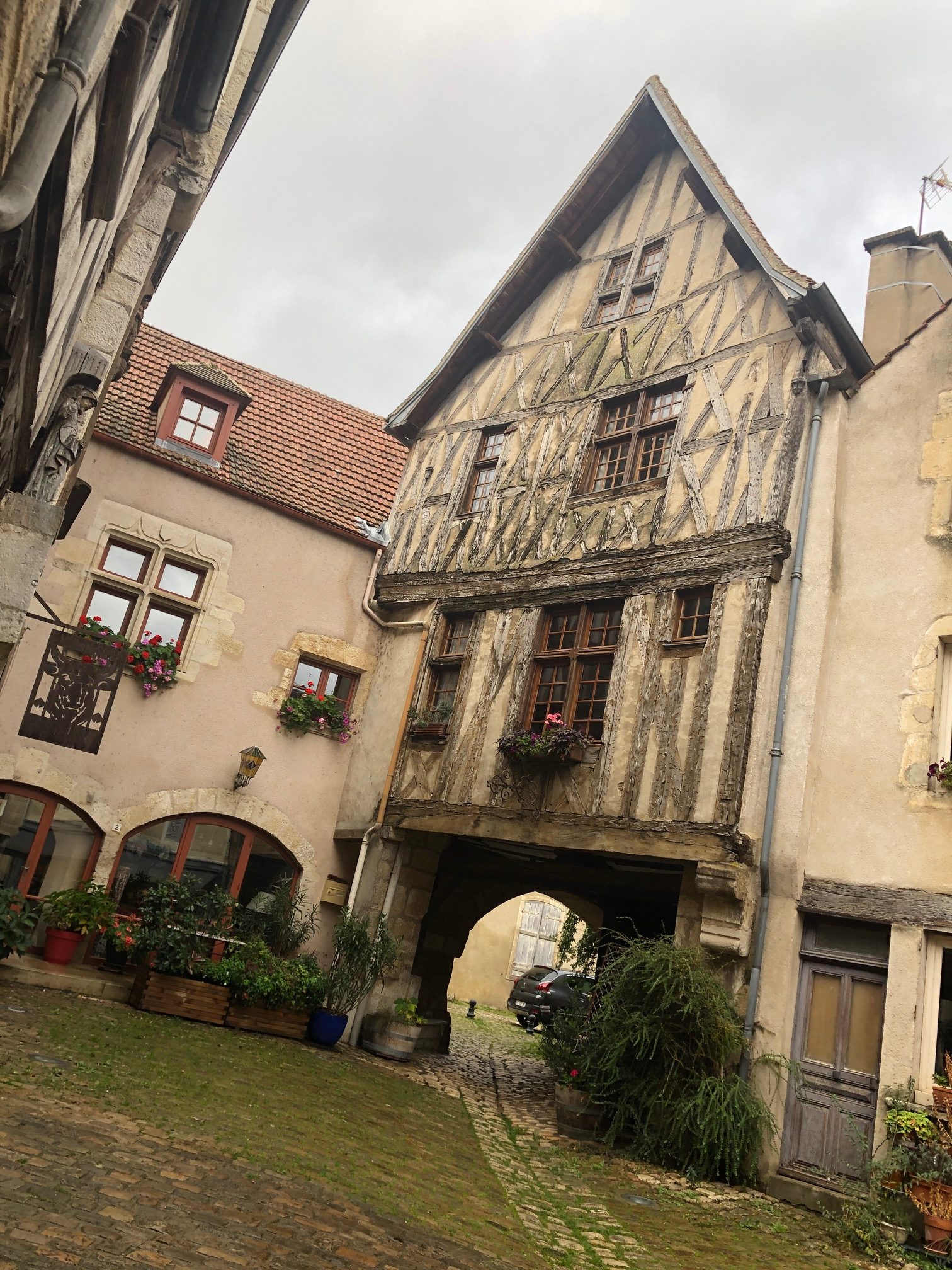 The origins of Noyers are unclear. It was founded by the king of Sequani Gaul tribe, just before the Roman conquest, or by a contemporary of Julius Caesar called Lucidorius. He would have given the city its first name, Lucida.
The origins of Noyers are unclear. It was founded by the king of Sequani Gaul tribe, just before the Roman conquest, or by a contemporary of Julius Caesar called Lucidorius. He would have given the city its first name, Lucida.
 In 1419, at the end of the Miles dynasty, Noyers became the property of the dukes of Burgundy. The Prince of Condé became count of Noyers. He made a Huguenot place of the city and took refuge in it after the defeat of the Amboise conspiracy in 1568. But Catherine de Médicis dislodged him and the garrison surrendered. Later the castle was dismantled by in 1599.
In 1419, at the end of the Miles dynasty, Noyers became the property of the dukes of Burgundy. The Prince of Condé became count of Noyers. He made a Huguenot place of the city and took refuge in it after the defeat of the Amboise conspiracy in 1568. But Catherine de Médicis dislodged him and the garrison surrendered. Later the castle was dismantled by in 1599.
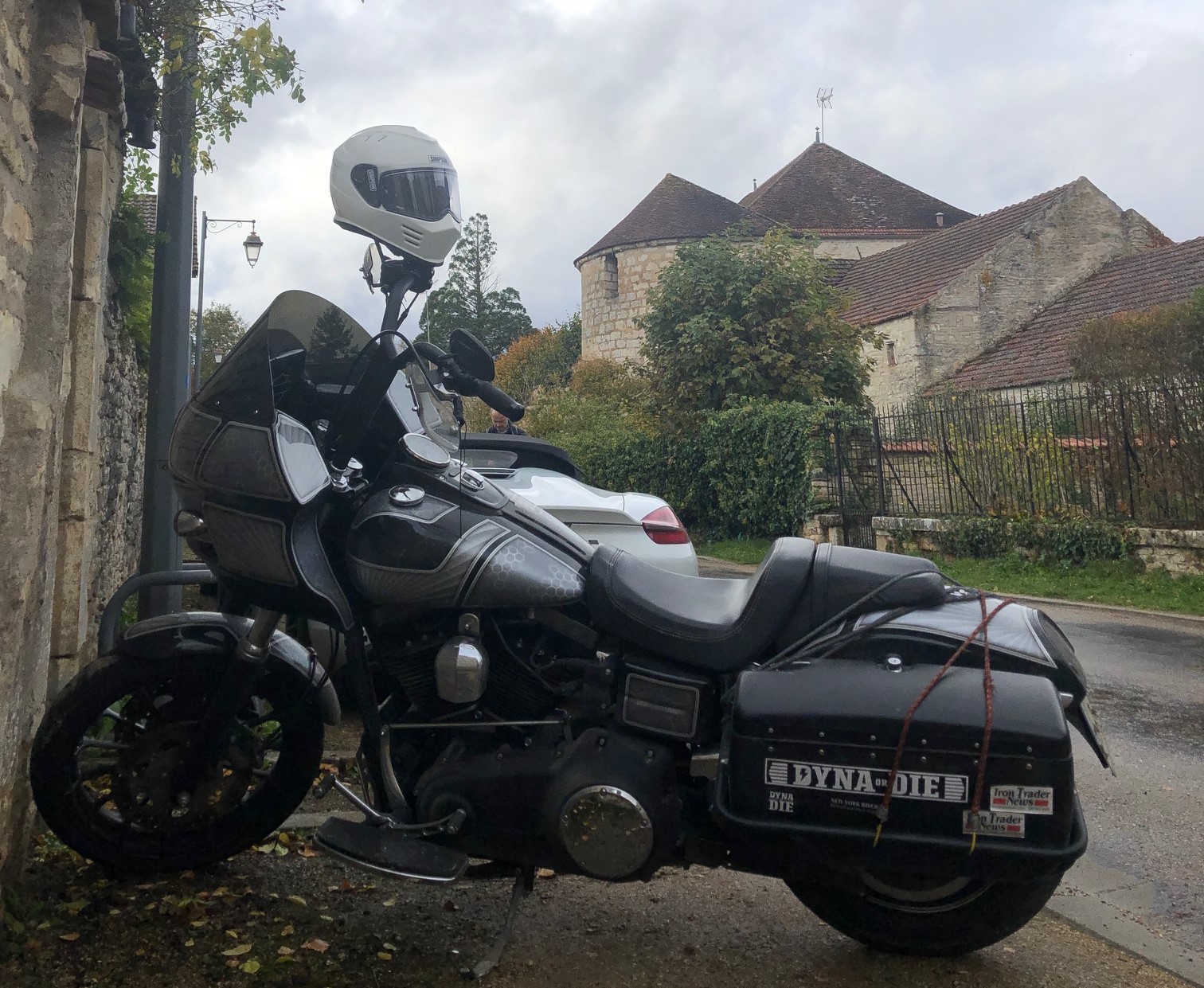 Wine and grain trade were prosperous at Noyers. Many documents attest there were plenty of vines, walnut-trees and cherry-trees over the hills all around Noyers. Till the beginning of the twentieth century a great part of local craftsmen was represented by cartwrights, harness-makers, coopers, farriers and shoe makers. In 1861 there were 128 vine-growers and 25 tillage-farmers. As of the 21st century, they are not as many farmers. And yes, we can testify, there is still wine in NOYER and some nice cool bars …
Wine and grain trade were prosperous at Noyers. Many documents attest there were plenty of vines, walnut-trees and cherry-trees over the hills all around Noyers. Till the beginning of the twentieth century a great part of local craftsmen was represented by cartwrights, harness-makers, coopers, farriers and shoe makers. In 1861 there were 128 vine-growers and 25 tillage-farmers. As of the 21st century, they are not as many farmers. And yes, we can testify, there is still wine in NOYER and some nice cool bars …
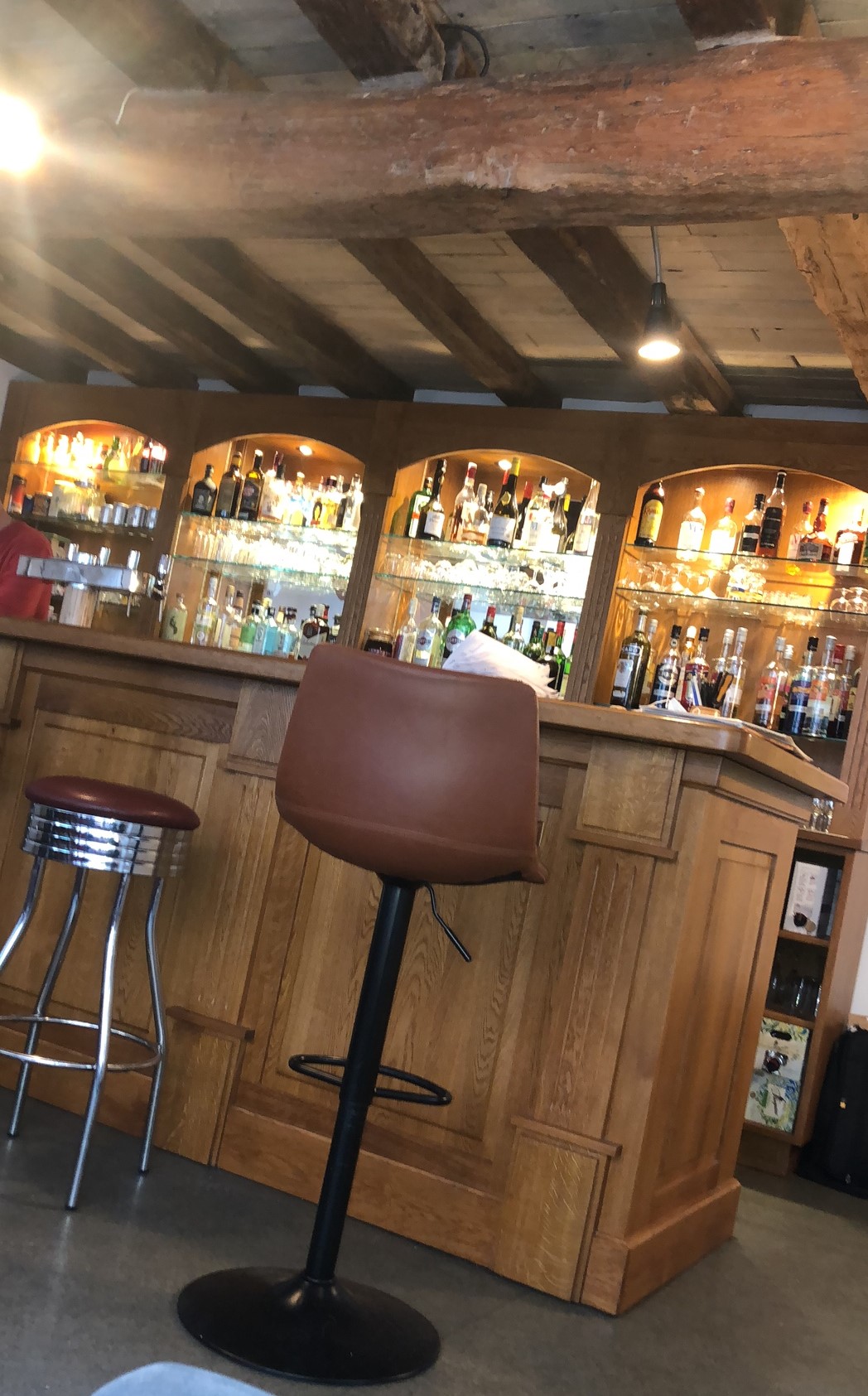 Yes, it’s a fact, the city of NOYER is really nice.
Yes, it’s a fact, the city of NOYER is really nice.
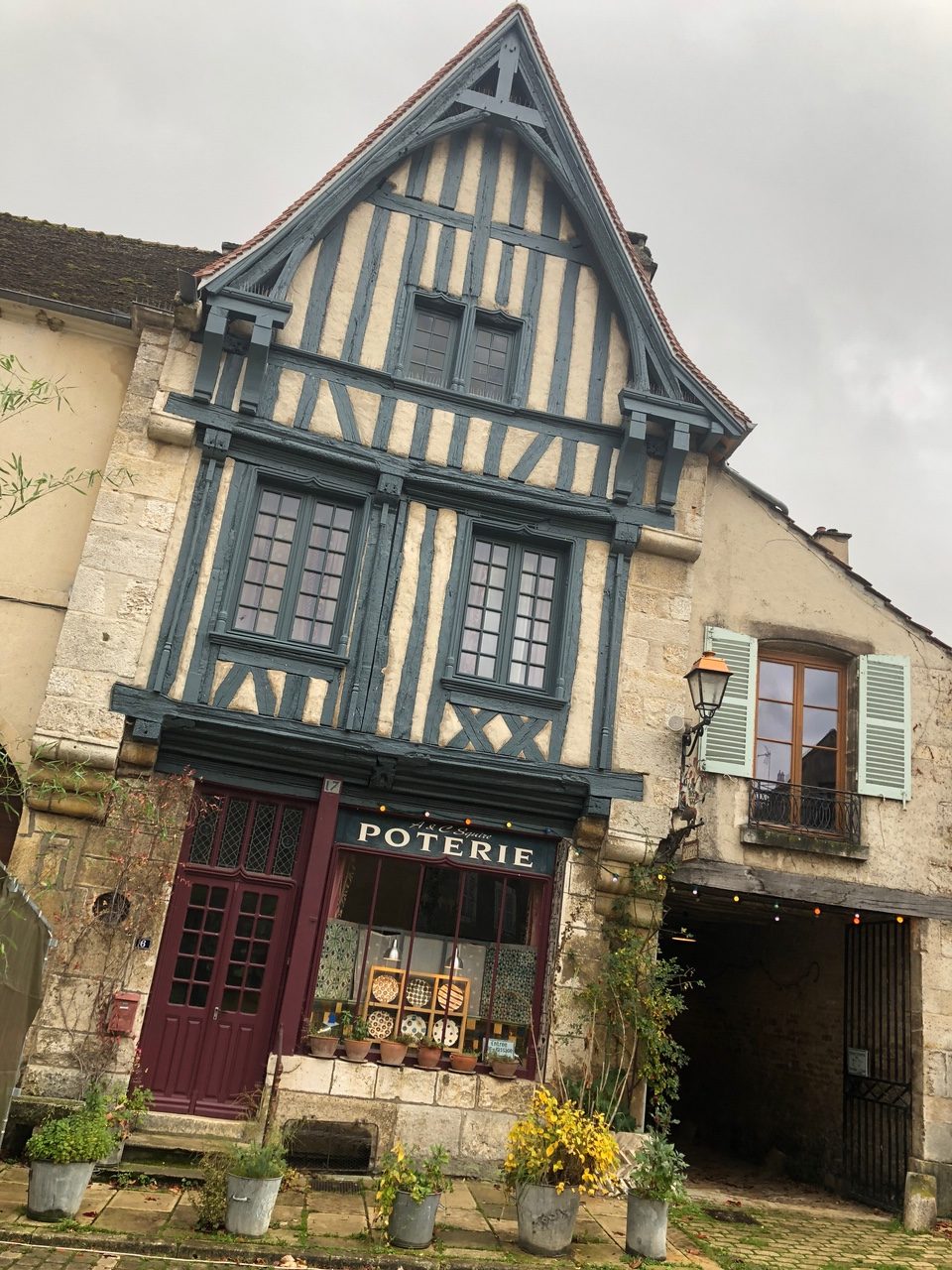 Our next stage was supposed to be VEZELAY in the legendary district of Avallon. The first traces of human settlement in the vicinity of Vézelay date from 2300 to 2200 BC. near the sources of the Salt Fountains. In the first century and the second century, about two thousand mine shafts were mined in the south-west of Vezelay by about five hundred to eight hundred slaves. These mines allowed the creation of a center of economic activity (market), a refuge and probably a place of pilgrimage. From the 1st century, the Romans set up the wine-growing on the hill of Vézelay. A temple in honor of Bacchus was discovered by the parish priest Guenot in 1689 in the foundations of the old church of Saint-Etienne during the construction of a new bell tower, which shows the importance of this culture in the region.
Our next stage was supposed to be VEZELAY in the legendary district of Avallon. The first traces of human settlement in the vicinity of Vézelay date from 2300 to 2200 BC. near the sources of the Salt Fountains. In the first century and the second century, about two thousand mine shafts were mined in the south-west of Vezelay by about five hundred to eight hundred slaves. These mines allowed the creation of a center of economic activity (market), a refuge and probably a place of pilgrimage. From the 1st century, the Romans set up the wine-growing on the hill of Vézelay. A temple in honor of Bacchus was discovered by the parish priest Guenot in 1689 in the foundations of the old church of Saint-Etienne during the construction of a new bell tower, which shows the importance of this culture in the region.
Yes, but … my iron horse didn’tn want to see Vezelay …
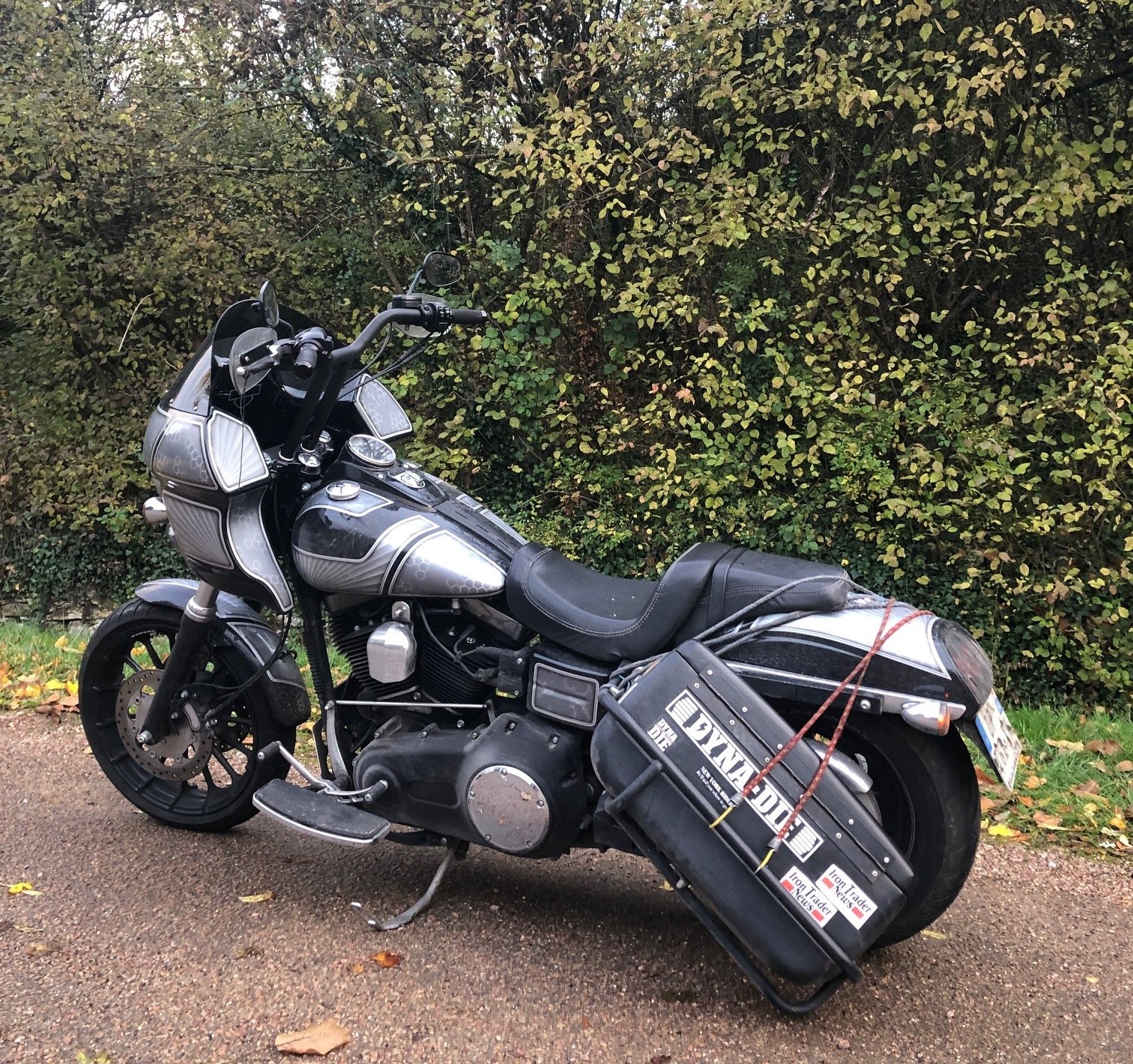 You may remember that in one of my last posts I told you about some troubles I got with my (bad quality) left bag. Till this Saturday afternoon, I managed it with a pair of magical tensors (Yes, I know, I was supposed to take it off since a long time but as every lazy biker I never have time for such little details – which can be solved with a pair of tensors, lol).
You may remember that in one of my last posts I told you about some troubles I got with my (bad quality) left bag. Till this Saturday afternoon, I managed it with a pair of magical tensors (Yes, I know, I was supposed to take it off since a long time but as every lazy biker I never have time for such little details – which can be solved with a pair of tensors, lol).
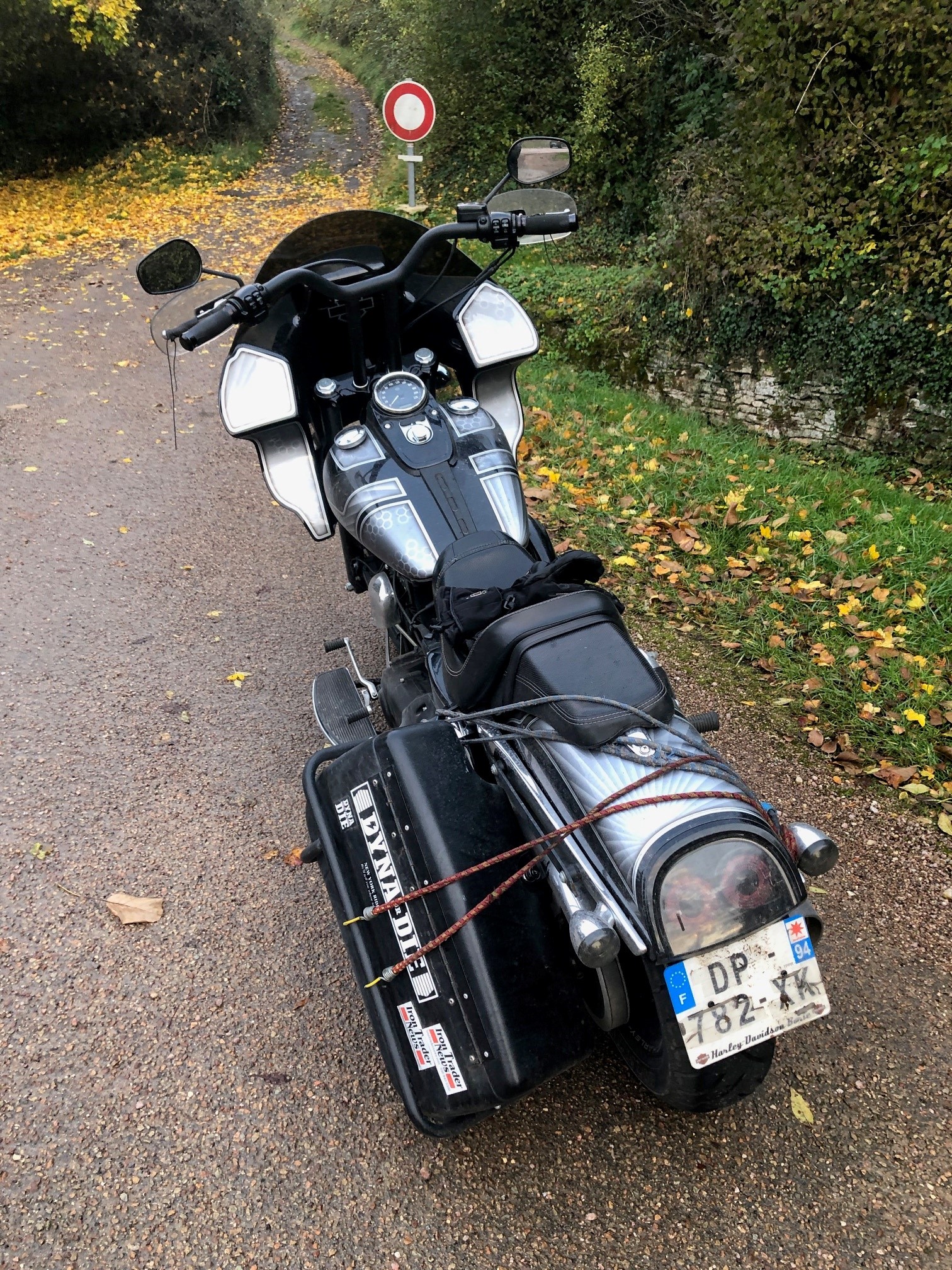 But at this precise moment, game was clearly over and we never saw VEZELAY.
But at this precise moment, game was clearly over and we never saw VEZELAY.
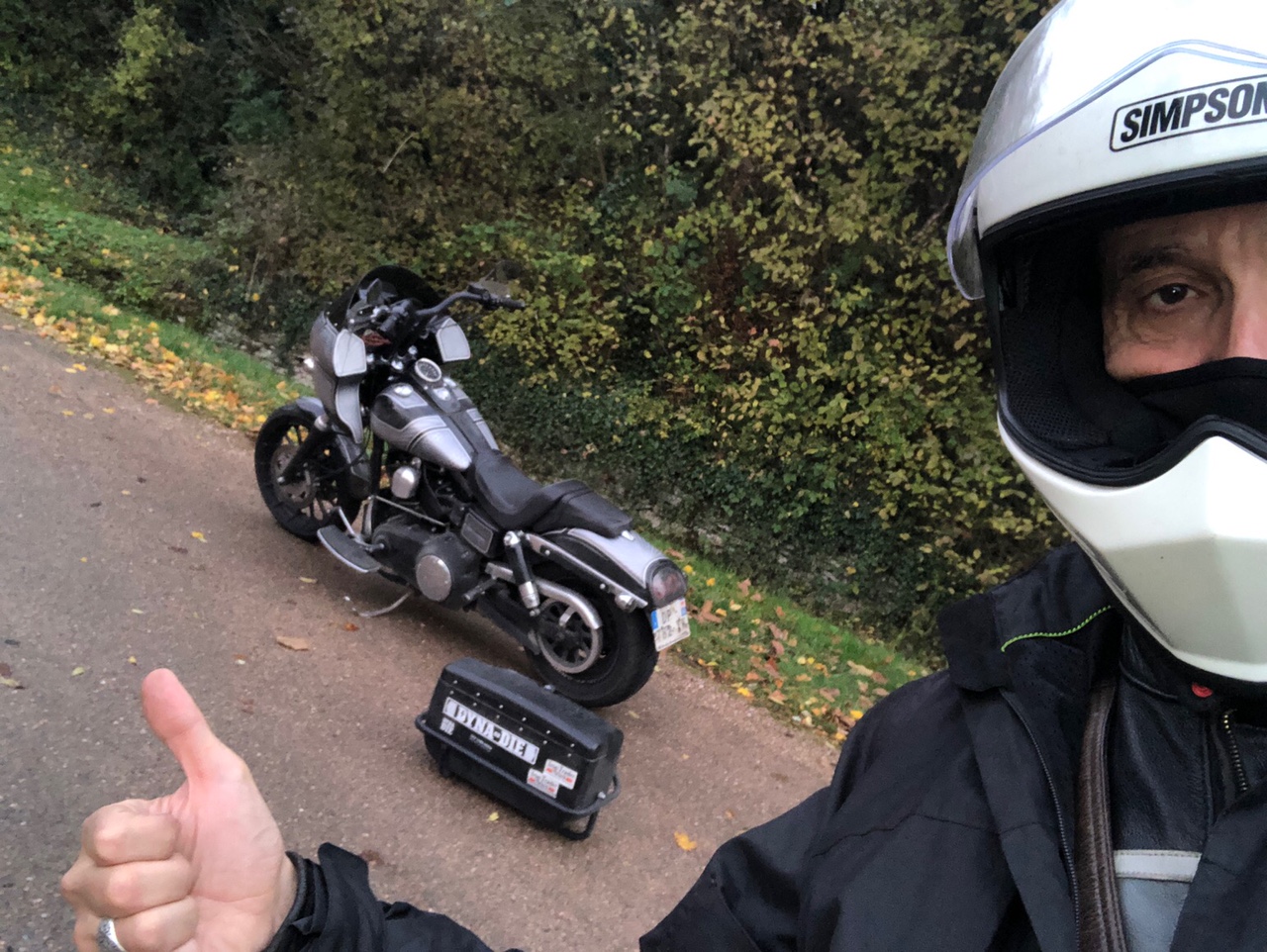 Night was coming and after some maintenance on the shoulder of the road (putting the bag in the Porsche) it was time to go to our nice hotel on this Saturday evening.
Night was coming and after some maintenance on the shoulder of the road (putting the bag in the Porsche) it was time to go to our nice hotel on this Saturday evening.
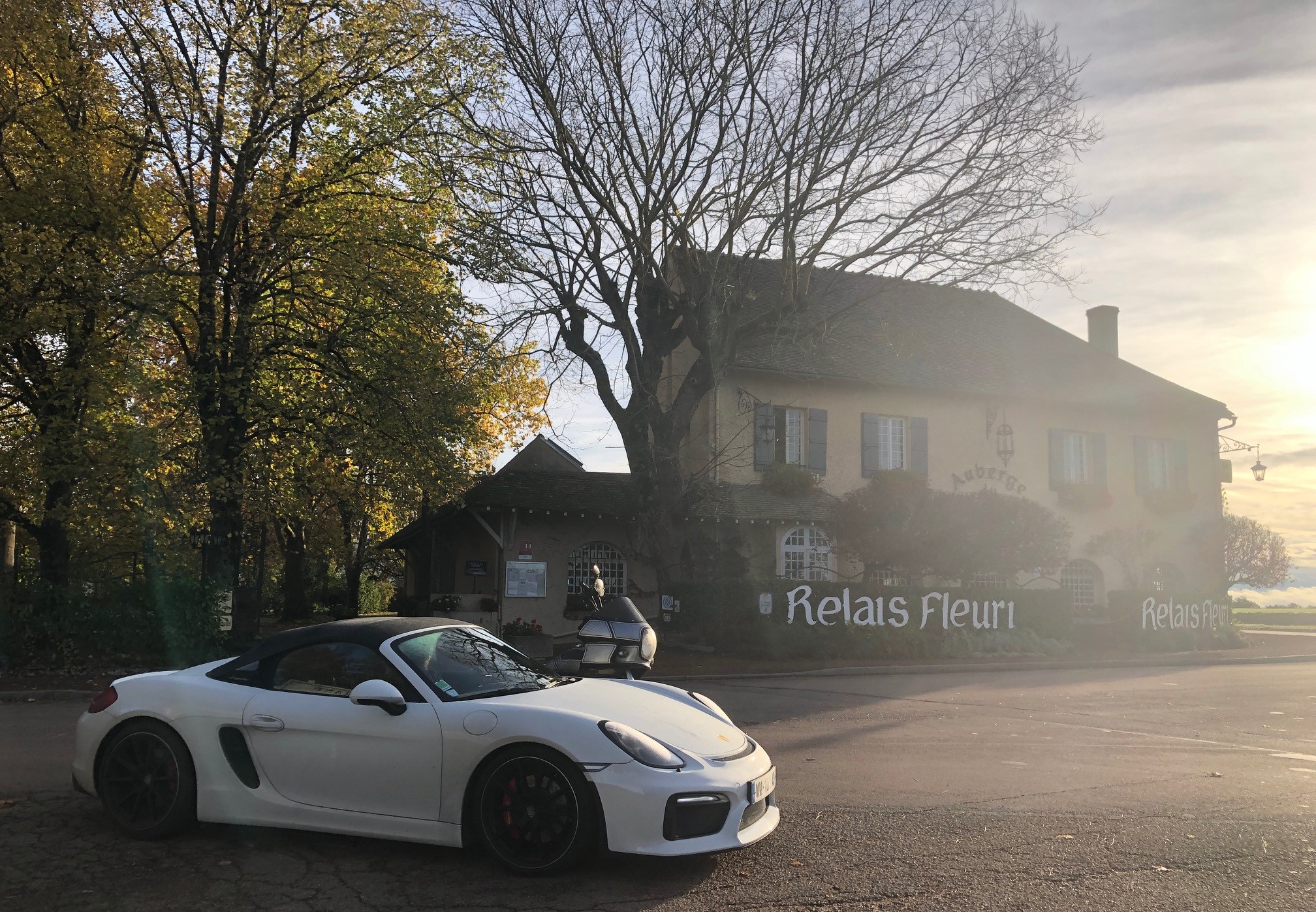 The day after, on this Sunday first of November, we were clearly lucky with such a sun!
The day after, on this Sunday first of November, we were clearly lucky with such a sun!
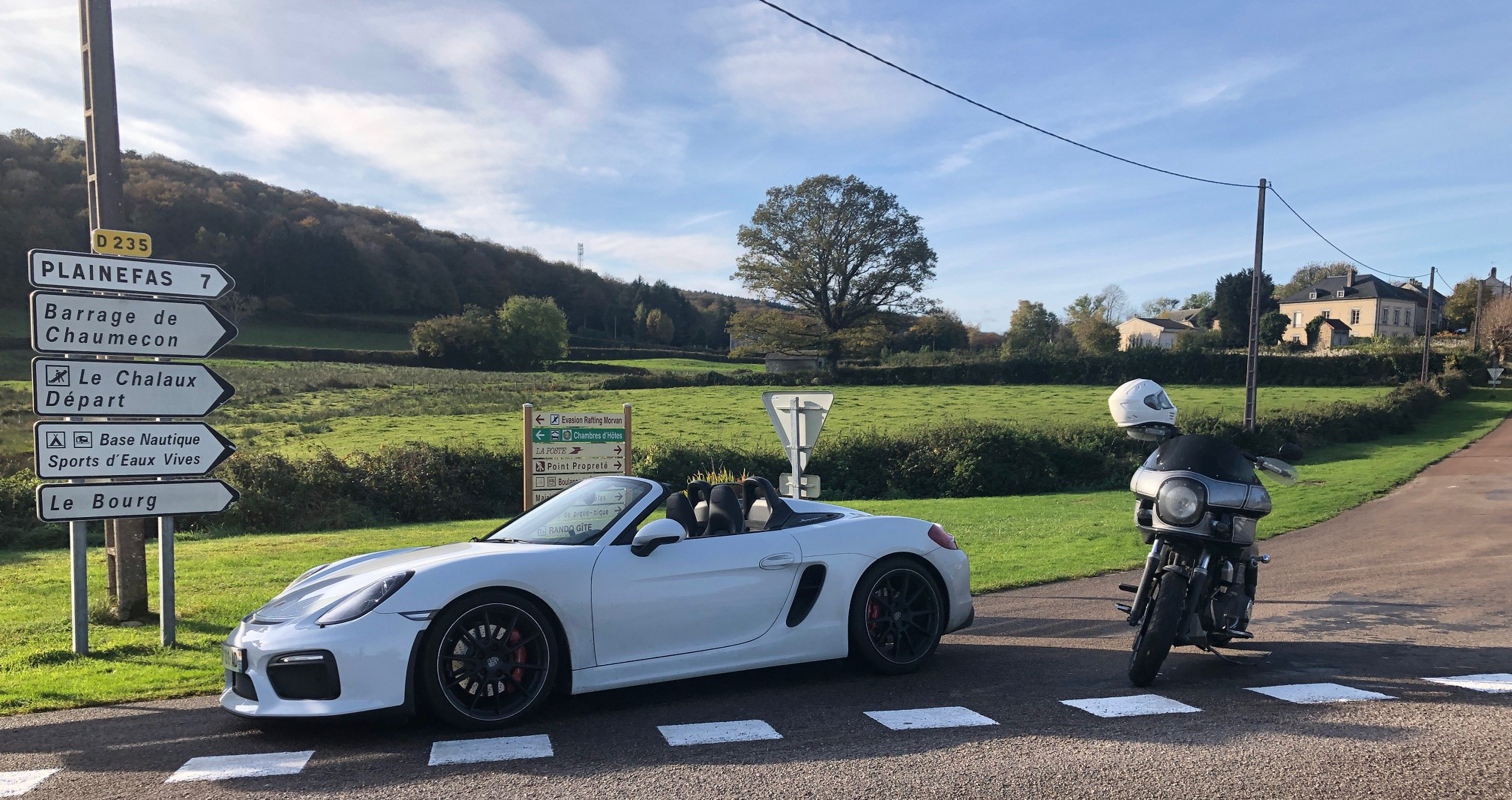 Opened road under a beautiful autumn light, with almost no traffic. It was a perfect riding / driving time.
Opened road under a beautiful autumn light, with almost no traffic. It was a perfect riding / driving time.
 We made stop in some nice places.
We made stop in some nice places.
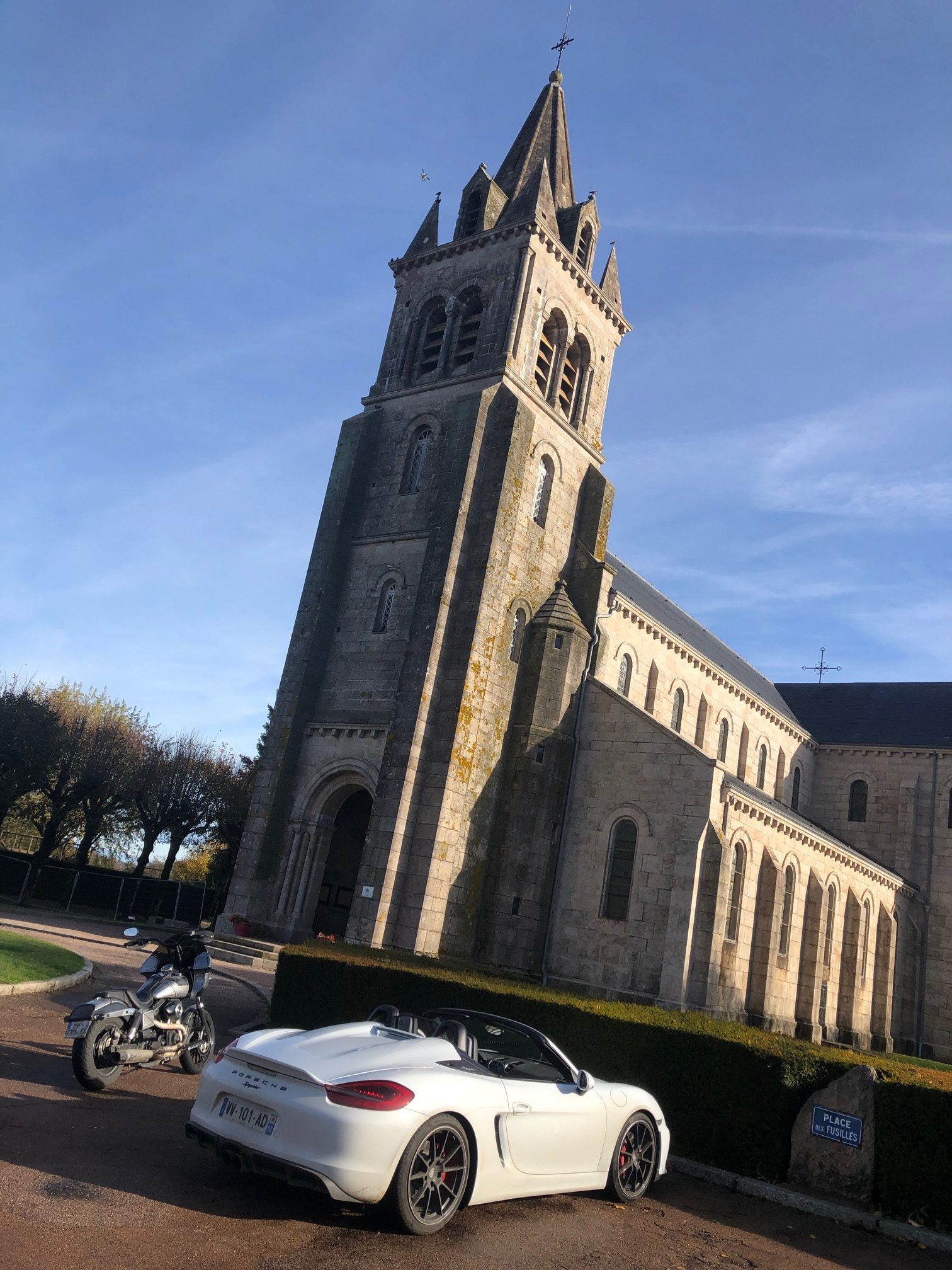 And had fun making some new picture.
And had fun making some new picture. 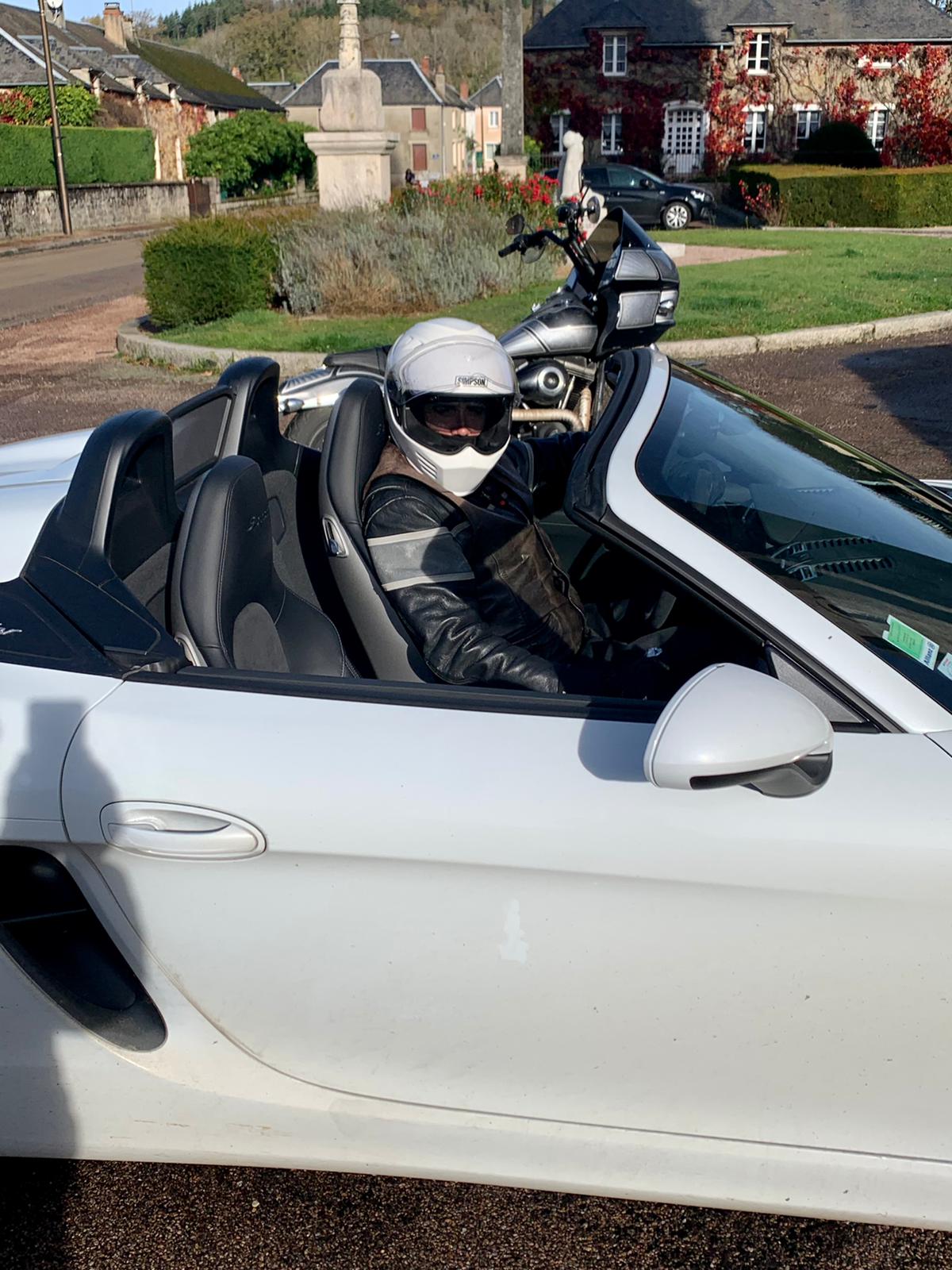
Discovering that, really, wine is everywhere in this part of France.
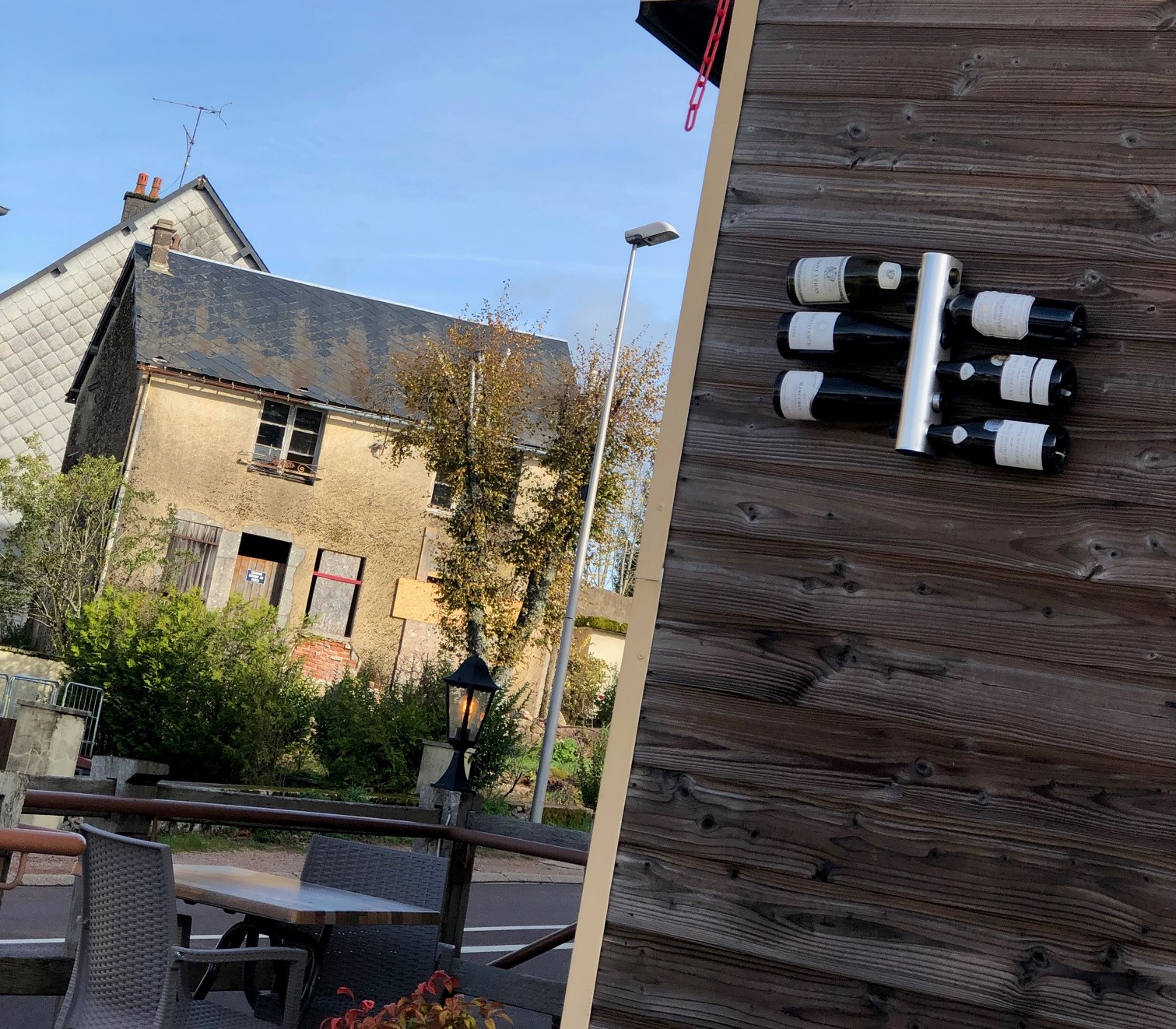 Then, it was time for a traditional Gallic lunch at BRIBACTE, a fortified settlement which, was the capital of the Aedui and one of the most important hillforts in Gaul. The restaurant, the Cauldron of Bibracte, is one of the popular restaurant located in Mont Beuvray
Then, it was time for a traditional Gallic lunch at BRIBACTE, a fortified settlement which, was the capital of the Aedui and one of the most important hillforts in Gaul. The restaurant, the Cauldron of Bibracte, is one of the popular restaurant located in Mont Beuvray
Bibracte is the name of an ancient Gallic town is also now the name of the company that manages the archaeological site, the research center, the museum and the restaurant, open all summer, and on weekends and holidays from mid-March to mid-November.
During a meal break, in an original setting, visitors can discover the ingredients available to the Gallic housewives and the utensils used to prepare them. A taste experience, which allows you to discover in a gourmet way the archaeology on the kitchen side.
This playful meal can be accompanied by the essential Cervoise (which means “beer” in old French), brewed exclusively for Bibracte (we can testify, it’s a very good one).
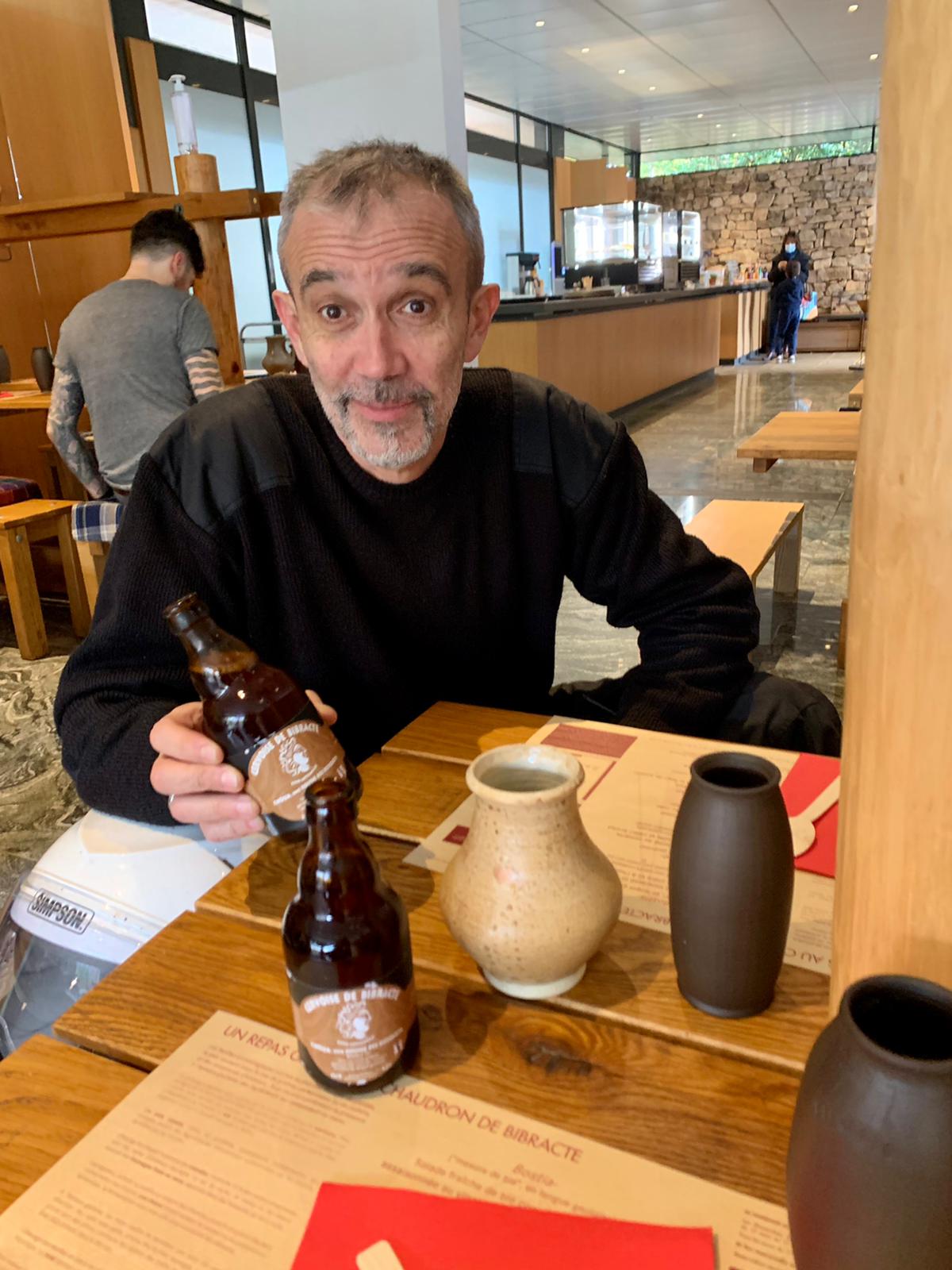 This trip was for fun, for good time, good wines / beers and meals of course but we didn’t want to come back home without seeing the famous castle of VAUBAN.
This trip was for fun, for good time, good wines / beers and meals of course but we didn’t want to come back home without seeing the famous castle of VAUBAN.
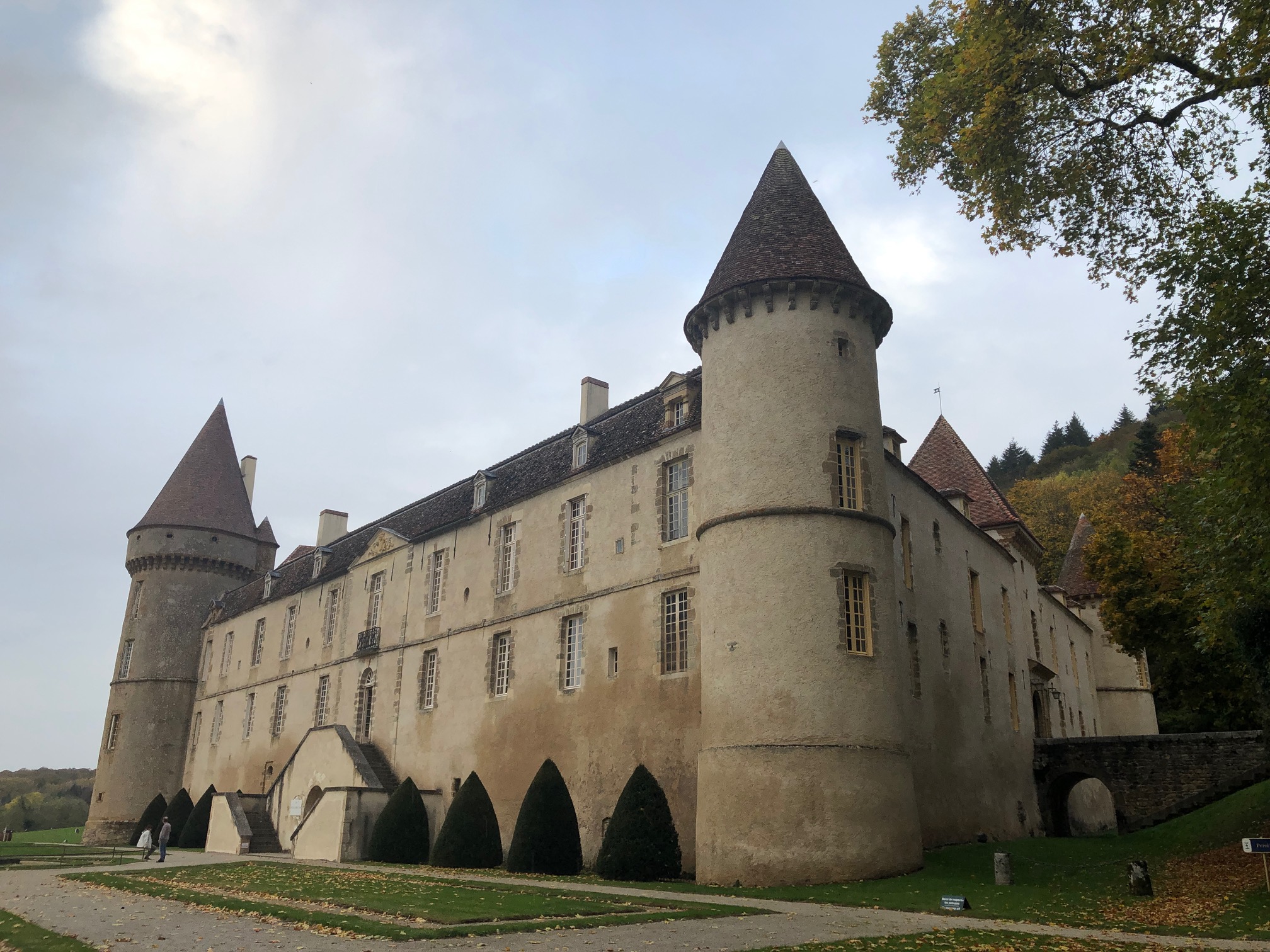 Bazoches is the Burgundy fief belonging to the French marquis de Vauban, the famous military architect of king Louis XIV but also engineer, general brigadier, fortification’s general superintendent…
Bazoches is the Burgundy fief belonging to the French marquis de Vauban, the famous military architect of king Louis XIV but also engineer, general brigadier, fortification’s general superintendent…
The former castle was put up in the 12th century for Jean de Bazoches. In 1589, the lord’s daughter, Françoise de La Perrière, married Jacques Le Prestre de Vauban… Vauban’s grandfather. That way, our engineer set up in the castle in 1675.
The fortress was a trapezium, he added a wing in order to close the courtyard. Inside, he laid out his office. He extended stables and in the courtyard, he put four cannons king Louis XIV’s elder son gave to him after the battle of Philipsburg.
 Sébastien Le Prestre de Vauban, Seigneur de Vauban, later Marquis de Vauban (1 May 1633 – 30 March 1707), commonly referred to as Vauban, was a French military engineer who worked under Louis XIV. He is generally considered the greatest engineer of his time, and one of the most important in Western military history. His principles for fortifications were widely used for nearly 100 years, while aspects of his offensive tactics remained in use until the mid-twentieth century. He viewed civilian infrastructure as closely connected to military effectiveness and worked on many of France’s major ports, as well as projects like the Canal dela Bruche, which remain in use today. He founded the Corps royal des ingénieurs militaires, whose curriculum was based on his publications on engineering design, strategy and training.
Sébastien Le Prestre de Vauban, Seigneur de Vauban, later Marquis de Vauban (1 May 1633 – 30 March 1707), commonly referred to as Vauban, was a French military engineer who worked under Louis XIV. He is generally considered the greatest engineer of his time, and one of the most important in Western military history. His principles for fortifications were widely used for nearly 100 years, while aspects of his offensive tactics remained in use until the mid-twentieth century. He viewed civilian infrastructure as closely connected to military effectiveness and worked on many of France’s major ports, as well as projects like the Canal dela Bruche, which remain in use today. He founded the Corps royal des ingénieurs militaires, whose curriculum was based on his publications on engineering design, strategy and training.
 Perhaps the most enduring aspect of Vauban’s legacy was his view of France as a geographical entity. His advocacy of giving up territory for a more coherent and defensible border was unusual for the period; the boundaries of the French state he proposed in the north and east have changed very little in the four centuries since. He is probably the man who made the more lasting impression on the French landscape.
Perhaps the most enduring aspect of Vauban’s legacy was his view of France as a geographical entity. His advocacy of giving up territory for a more coherent and defensible border was unusual for the period; the boundaries of the French state he proposed in the north and east have changed very little in the four centuries since. He is probably the man who made the more lasting impression on the French landscape.
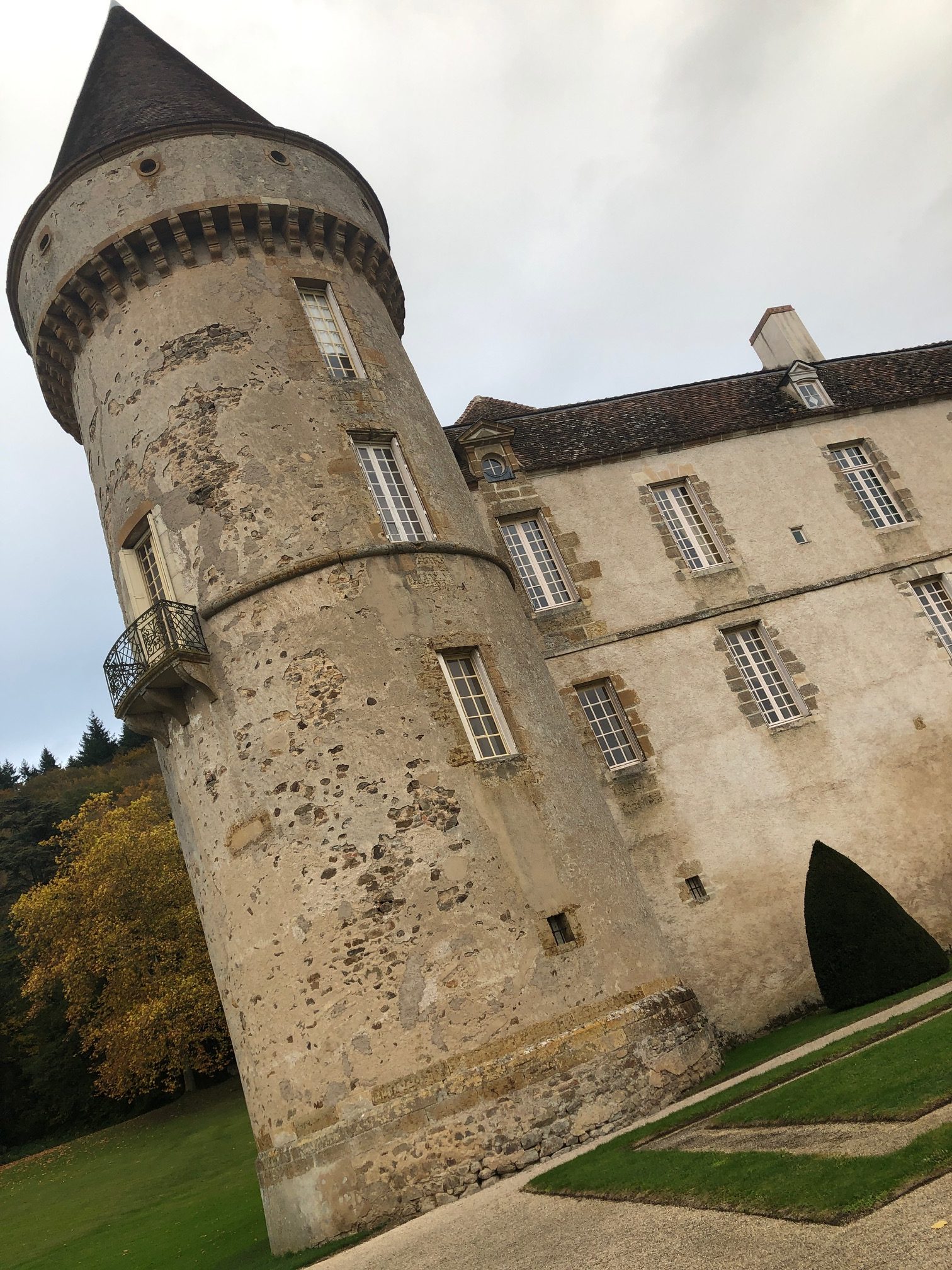 Indeed, many areas, many cities have a fort, a place, a rampart or a prospect built or arranged by this famous French (that is the case of almost three hundred fortified towns and military works disseminated in our country).
Indeed, many areas, many cities have a fort, a place, a rampart or a prospect built or arranged by this famous French (that is the case of almost three hundred fortified towns and military works disseminated in our country).
Remember that the 15th century is a transition period in the field of fortification: the power of the kings in particular Henri 4th and Louis 13th, is strengthened, and fortification is not any more the business of the lords defending their goods and their castles, but becomes the monopoly of monarchy, a technical revolution within the armament, and especially the cannon, which results made the traditional works (stronghold) unable to resist against the new weapons (Machiavel said in 1523: “The feudal castle is now useless.”). Thus, Italians created in 1530 a fortification new design; fortified towns whose very thick bastions could resist against these new lethal fires appeared. The fortified city was born. The French theorists took up these principles by amending them; Vauban kept going and improved considerably the fortification’s defence and attack systems.
Vauban worked in Bazoches, his family residence, and fitted out a significant part of the Château into a research department with his engineers. Thus, the bigger part of these fortified towns and military works disseminated all over France were conceived, perfected and illustrated by pictures and plans in Bazoches.
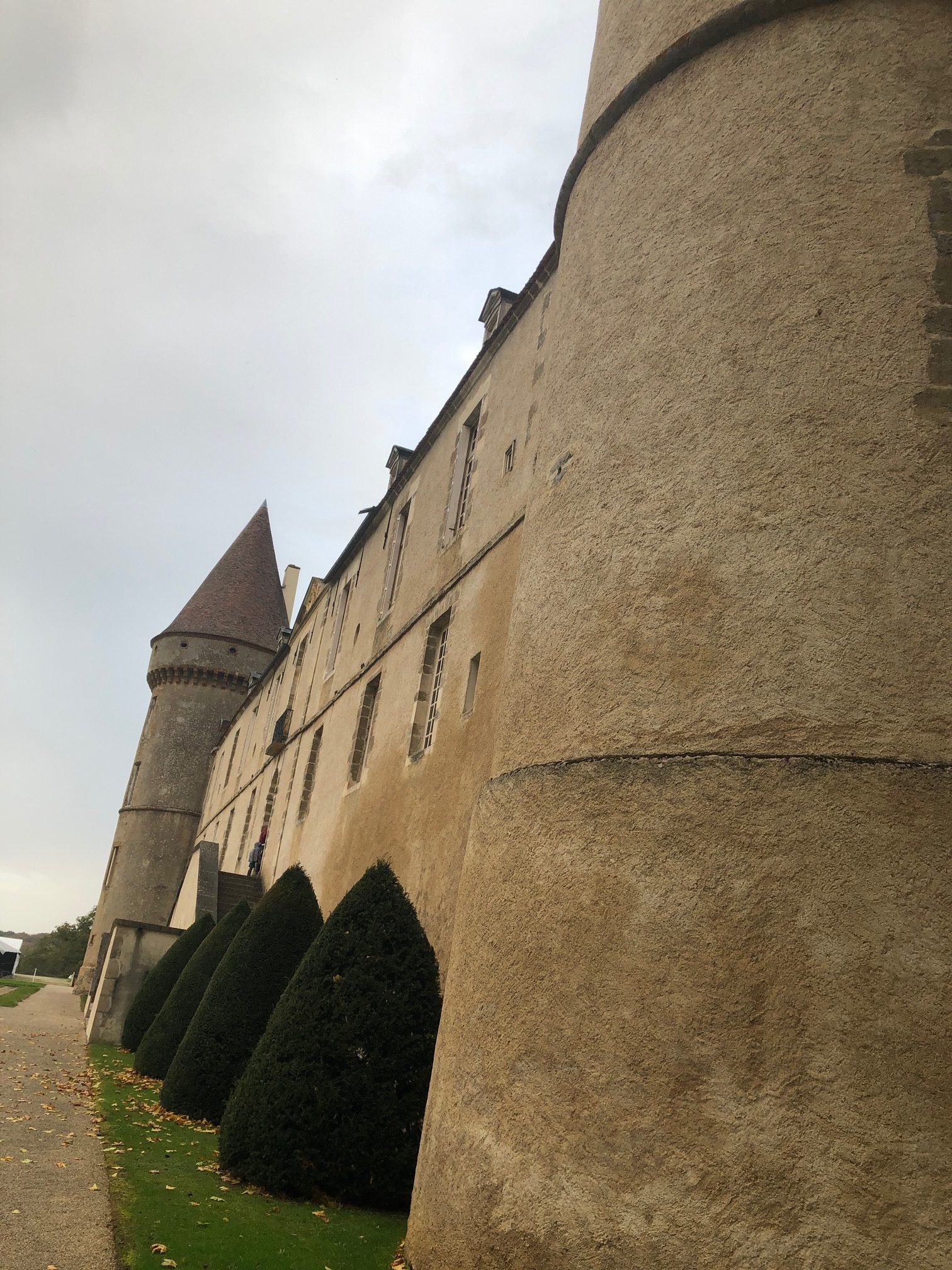 I love so much discovering the History of my country riding my bike on long distances (at the end of the trip it was exactly 1000,4km / 621,6 miles done).
I love so much discovering the History of my country riding my bike on long distances (at the end of the trip it was exactly 1000,4km / 621,6 miles done).
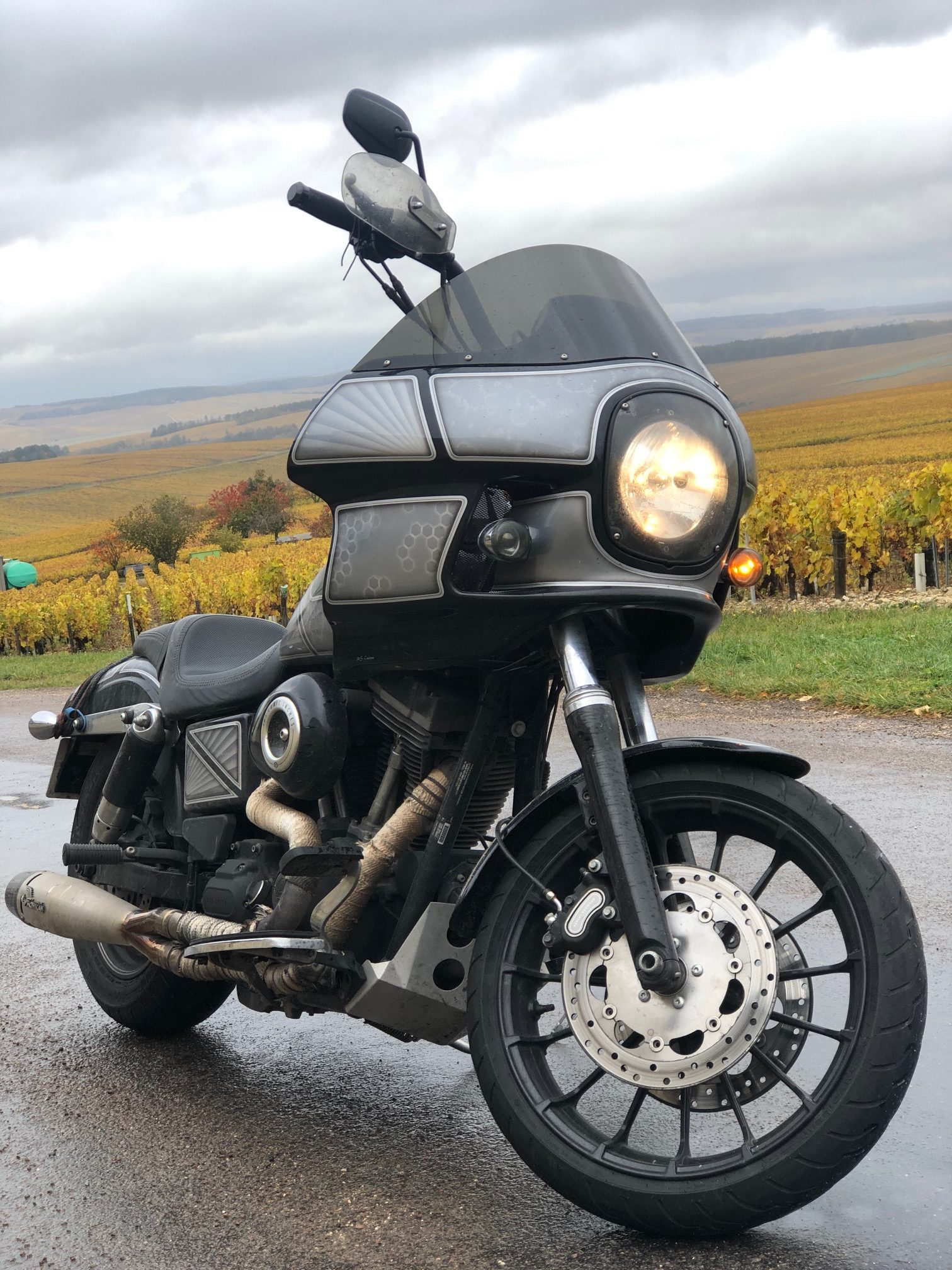 See ya soon on the road, who knows?
See ya soon on the road, who knows?





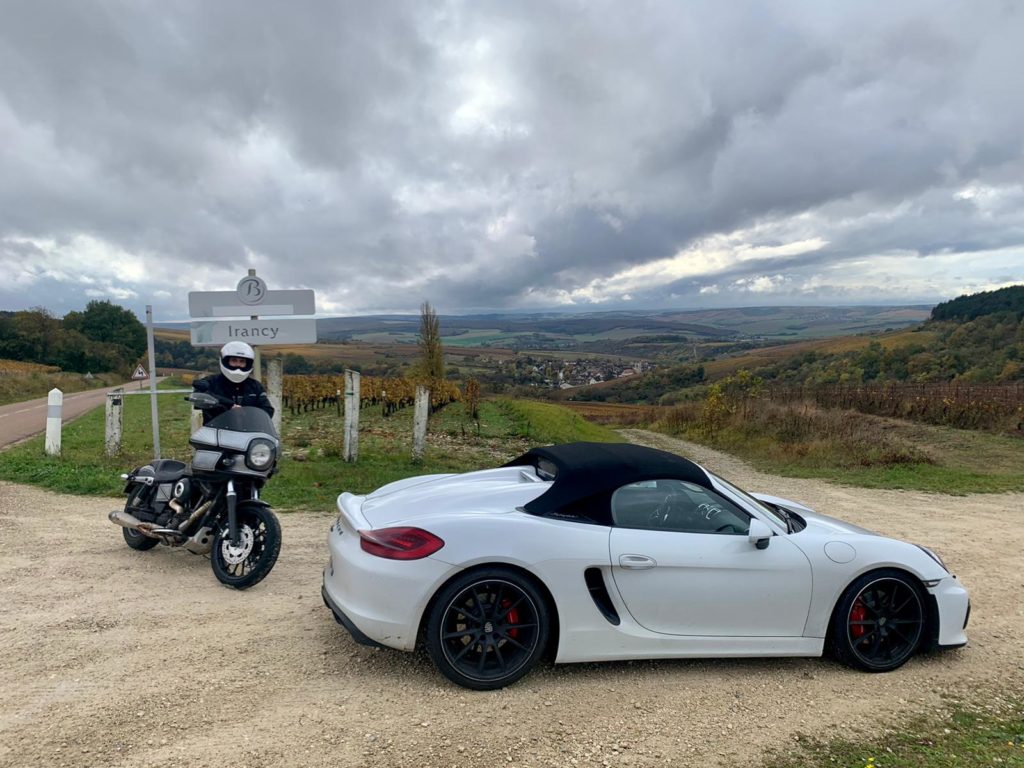

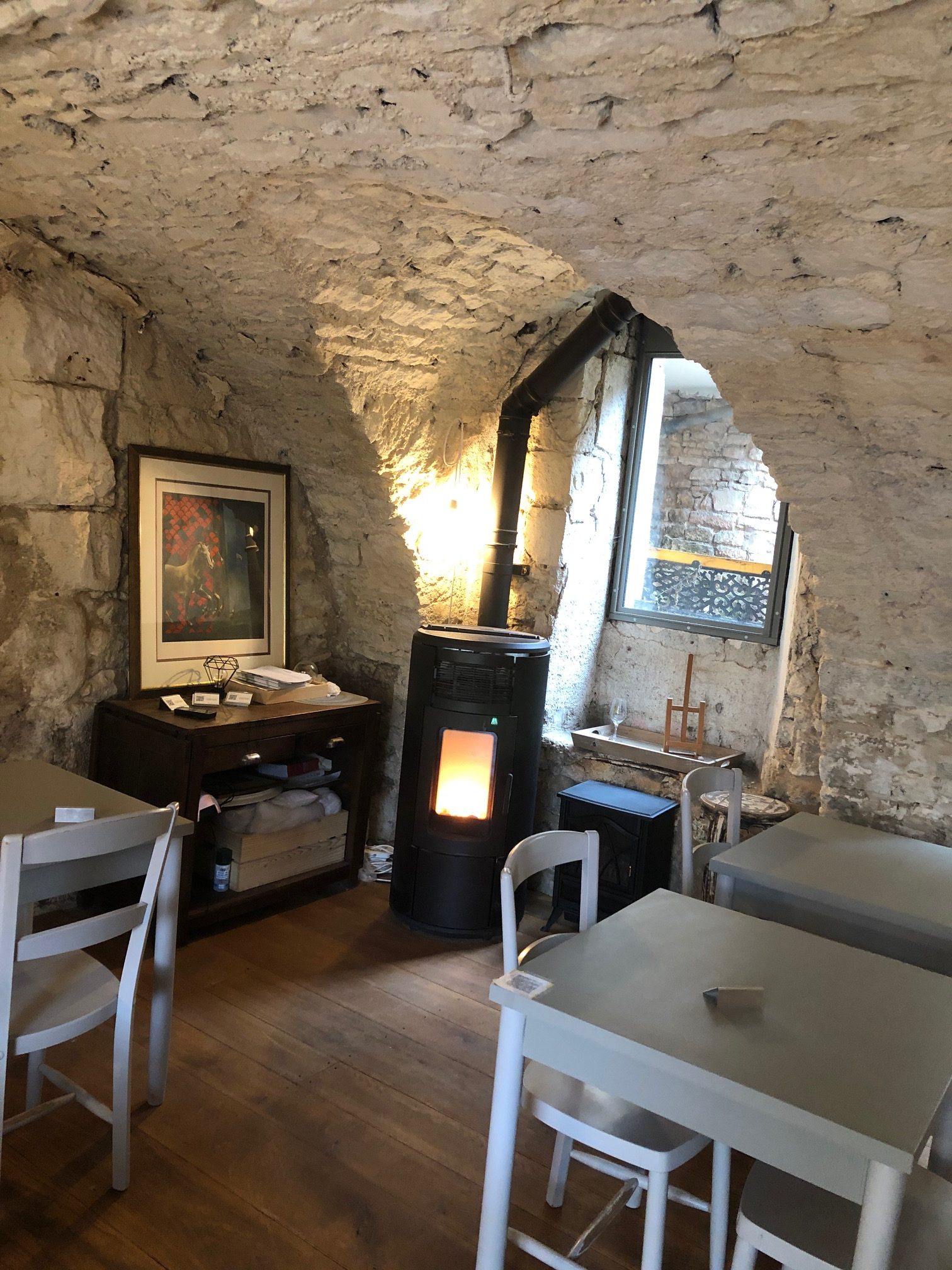
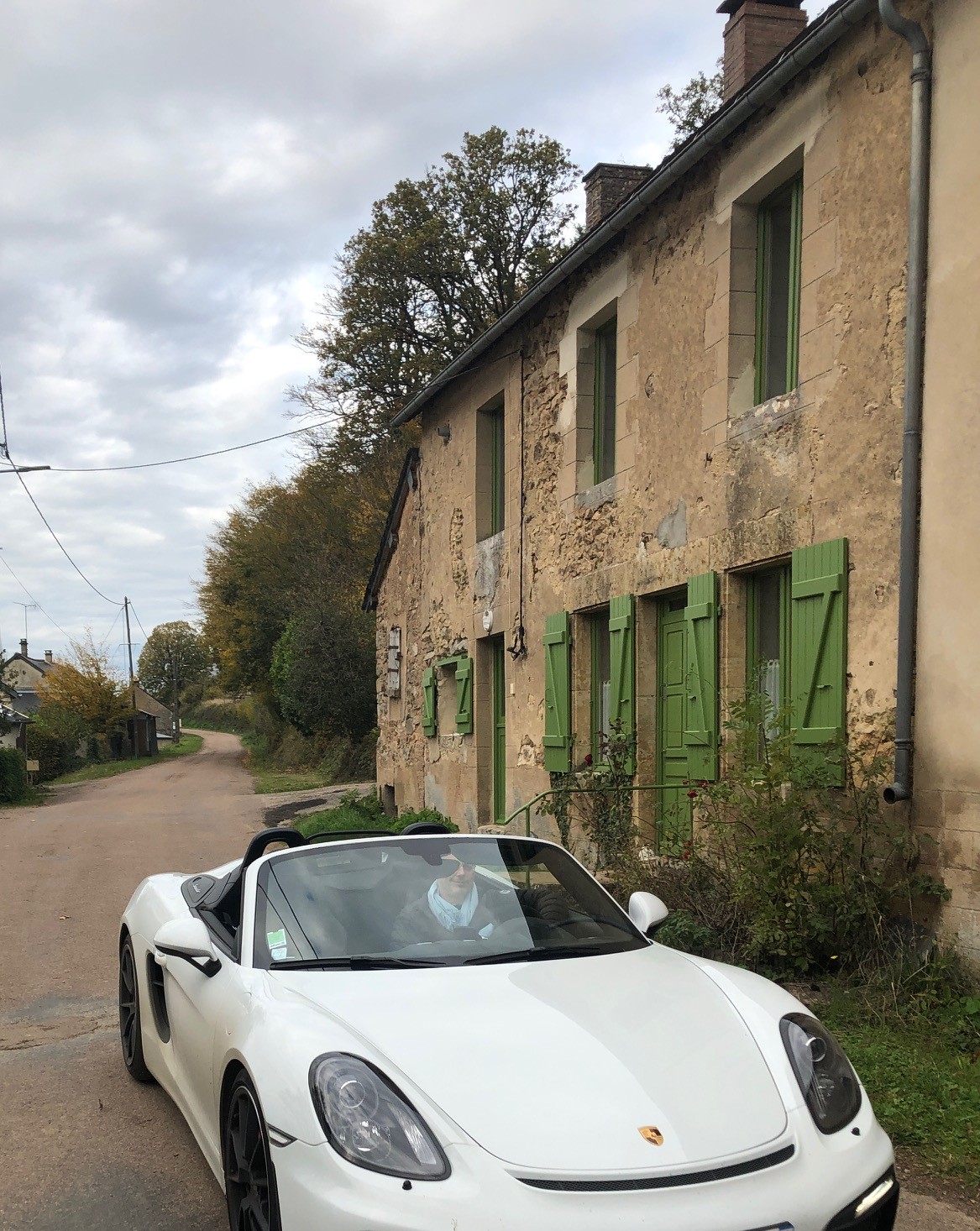
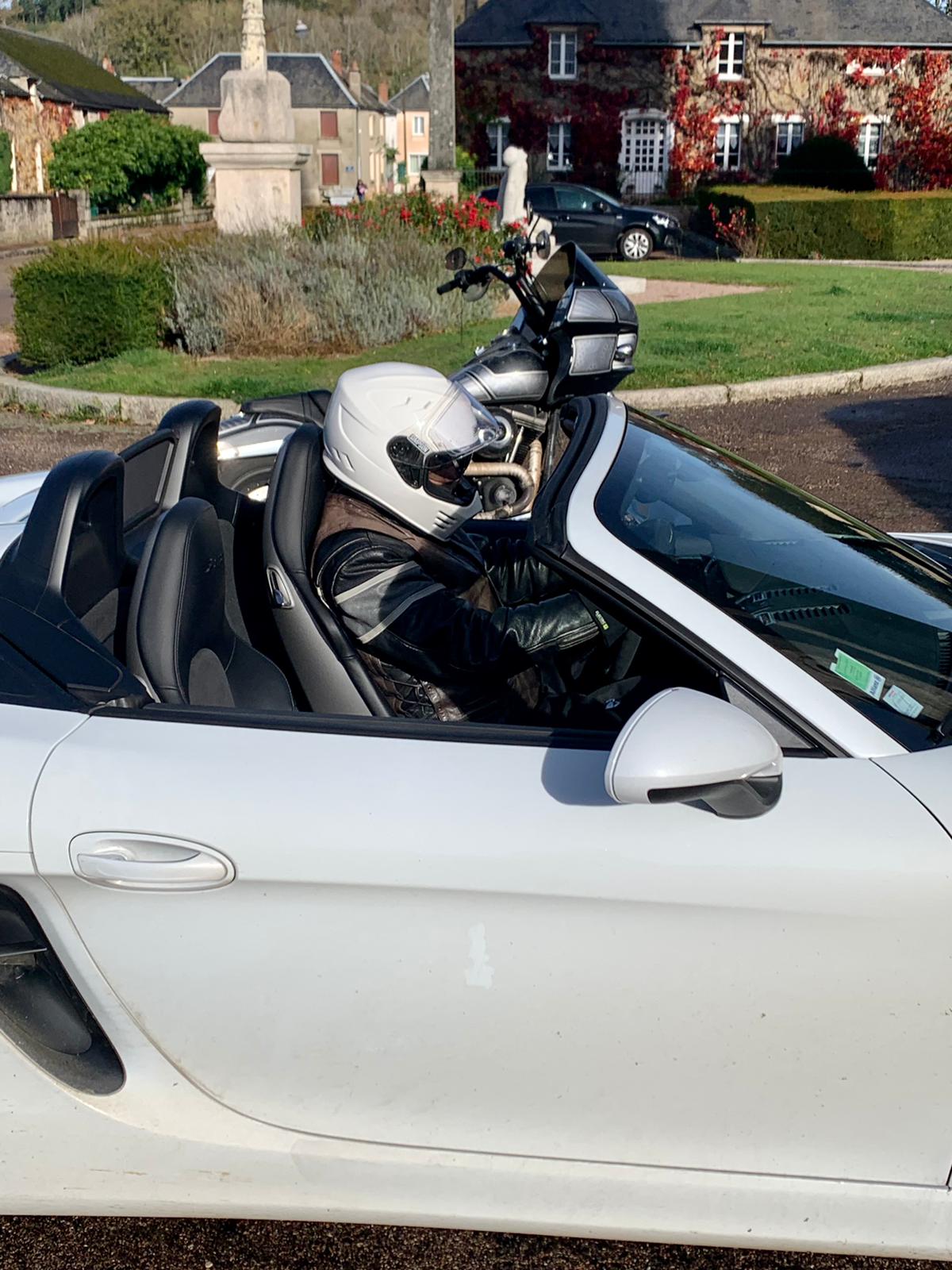
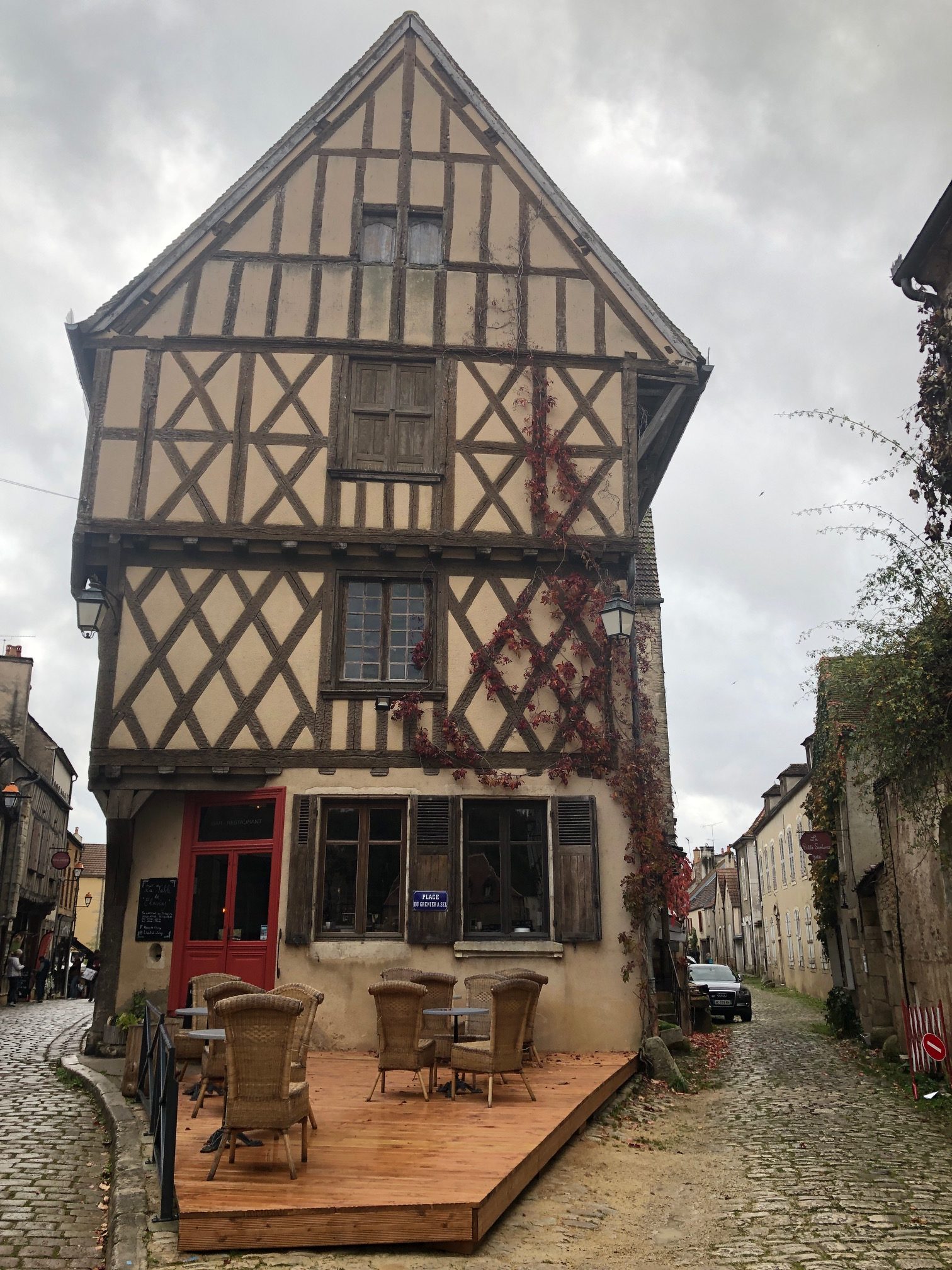
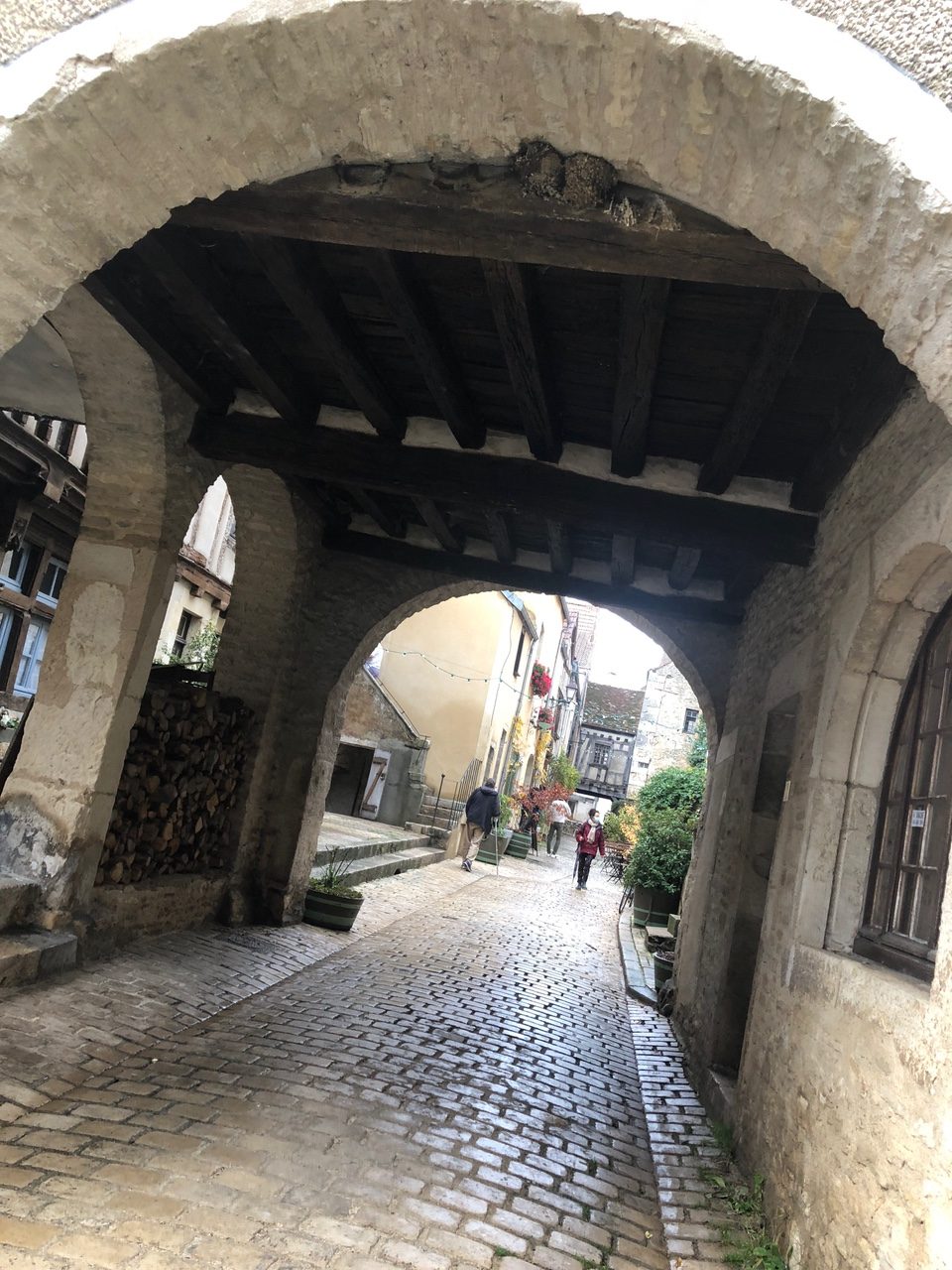
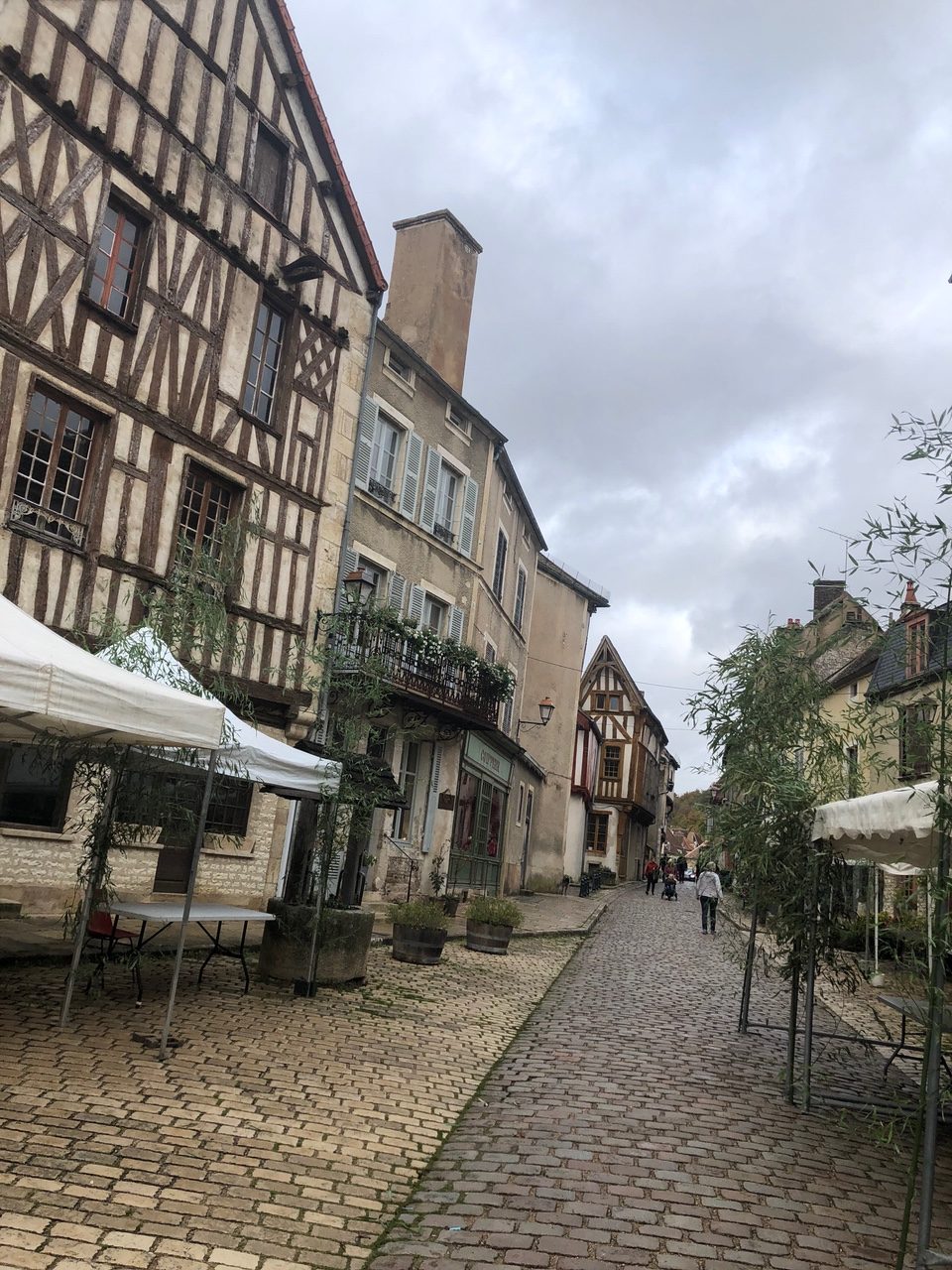

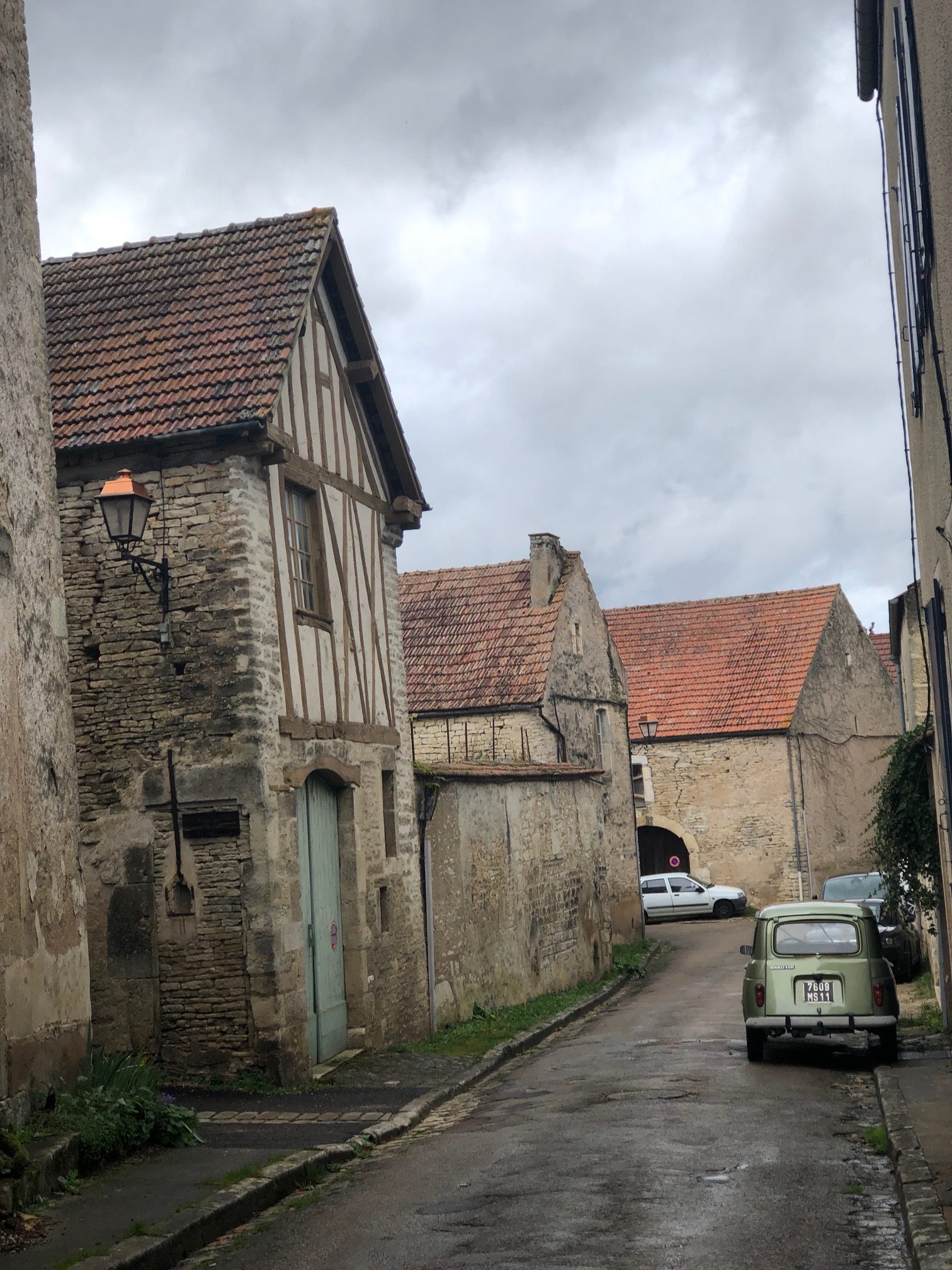
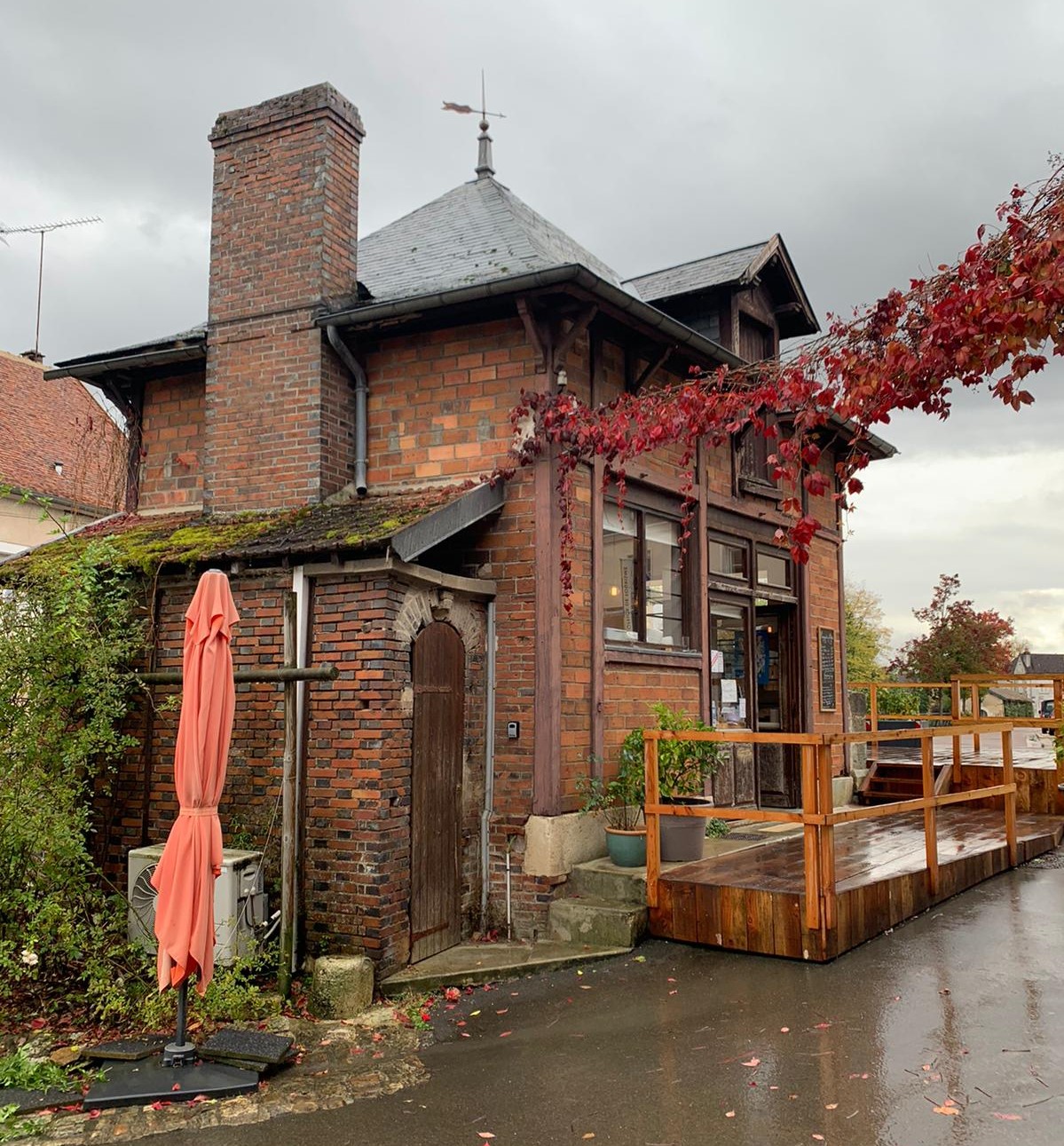



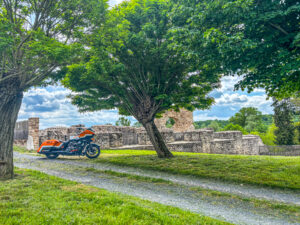
More Stories
RIDE TO THE GALLO-ROMAN SITE IN THE CENTER OF FRANCE
RIDE TO THE CASTLES
RIDE TO THE VALENCIA MARKET